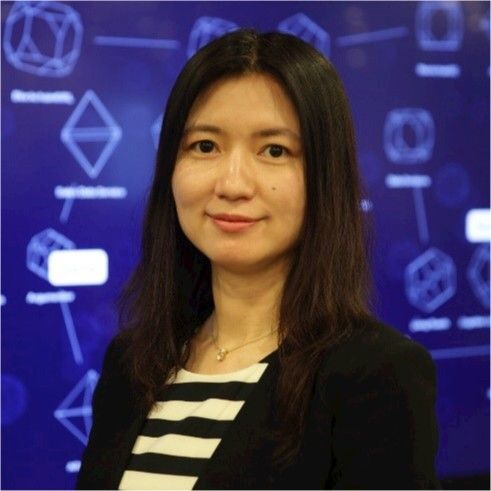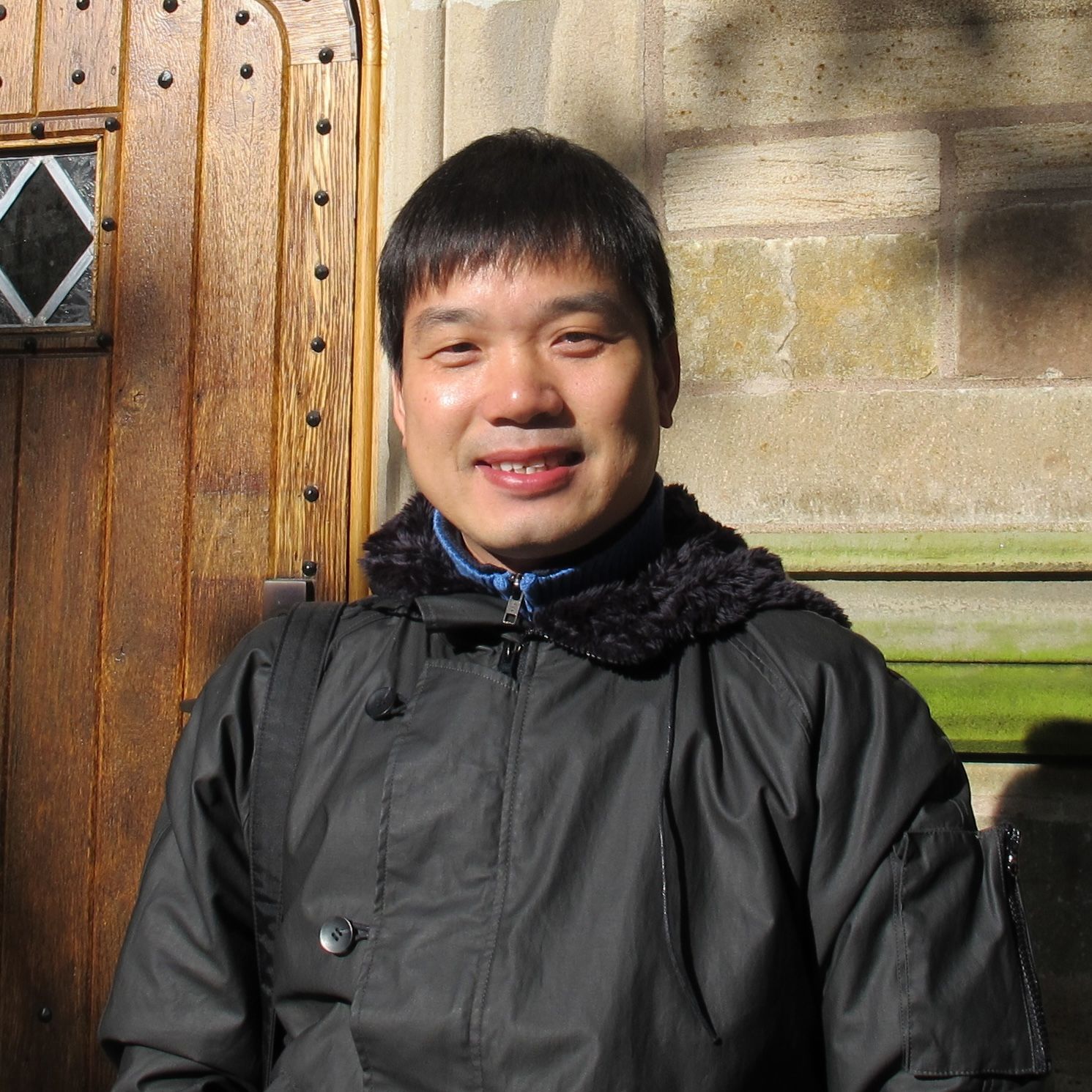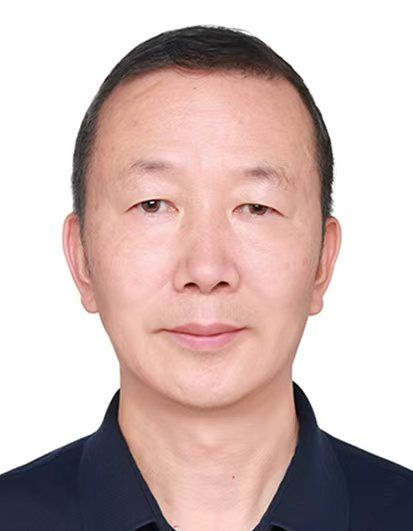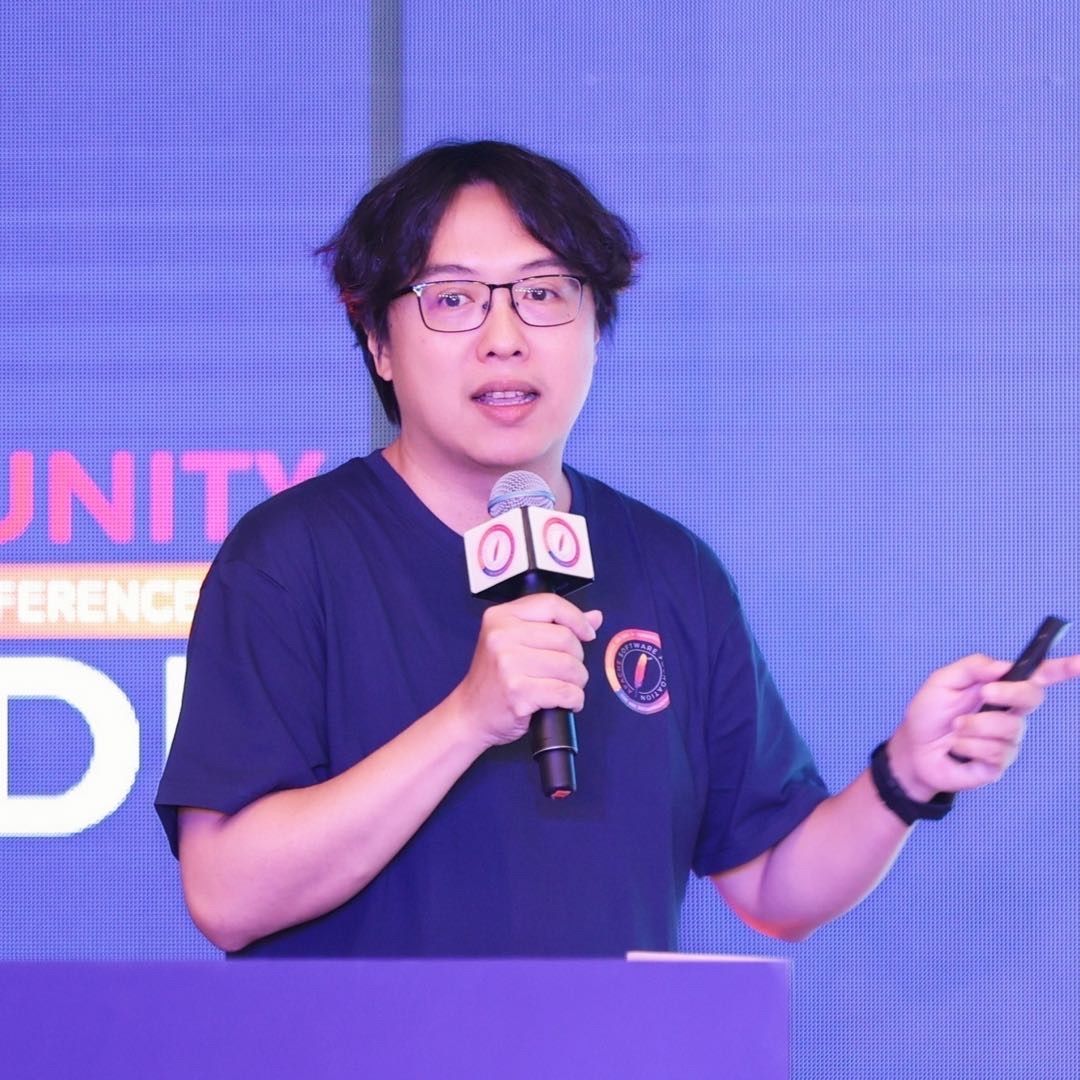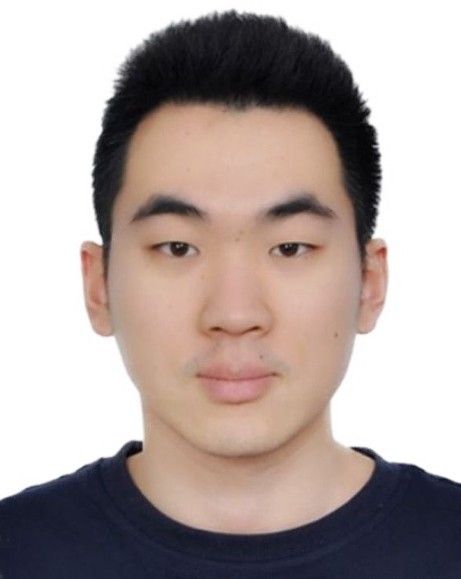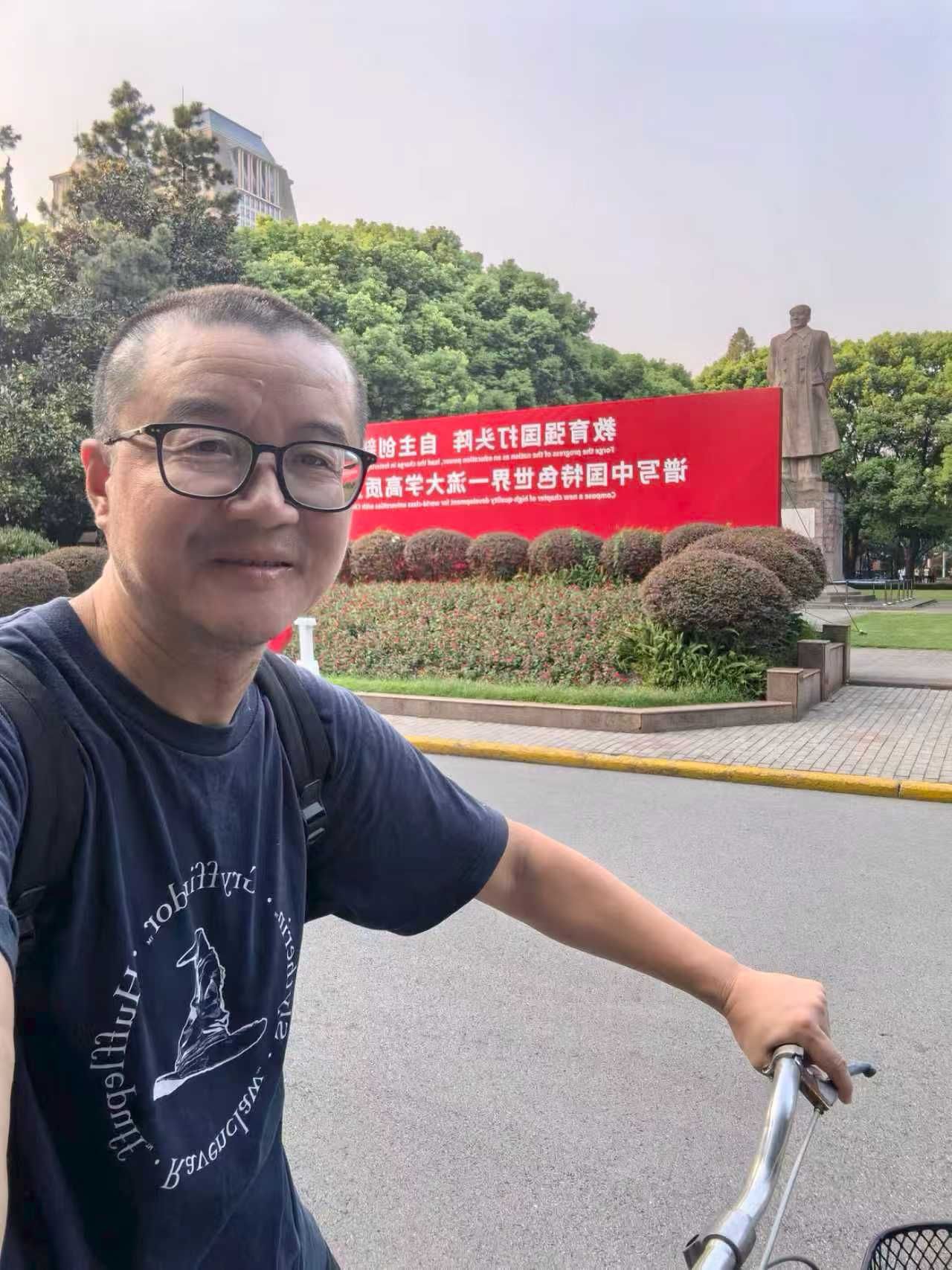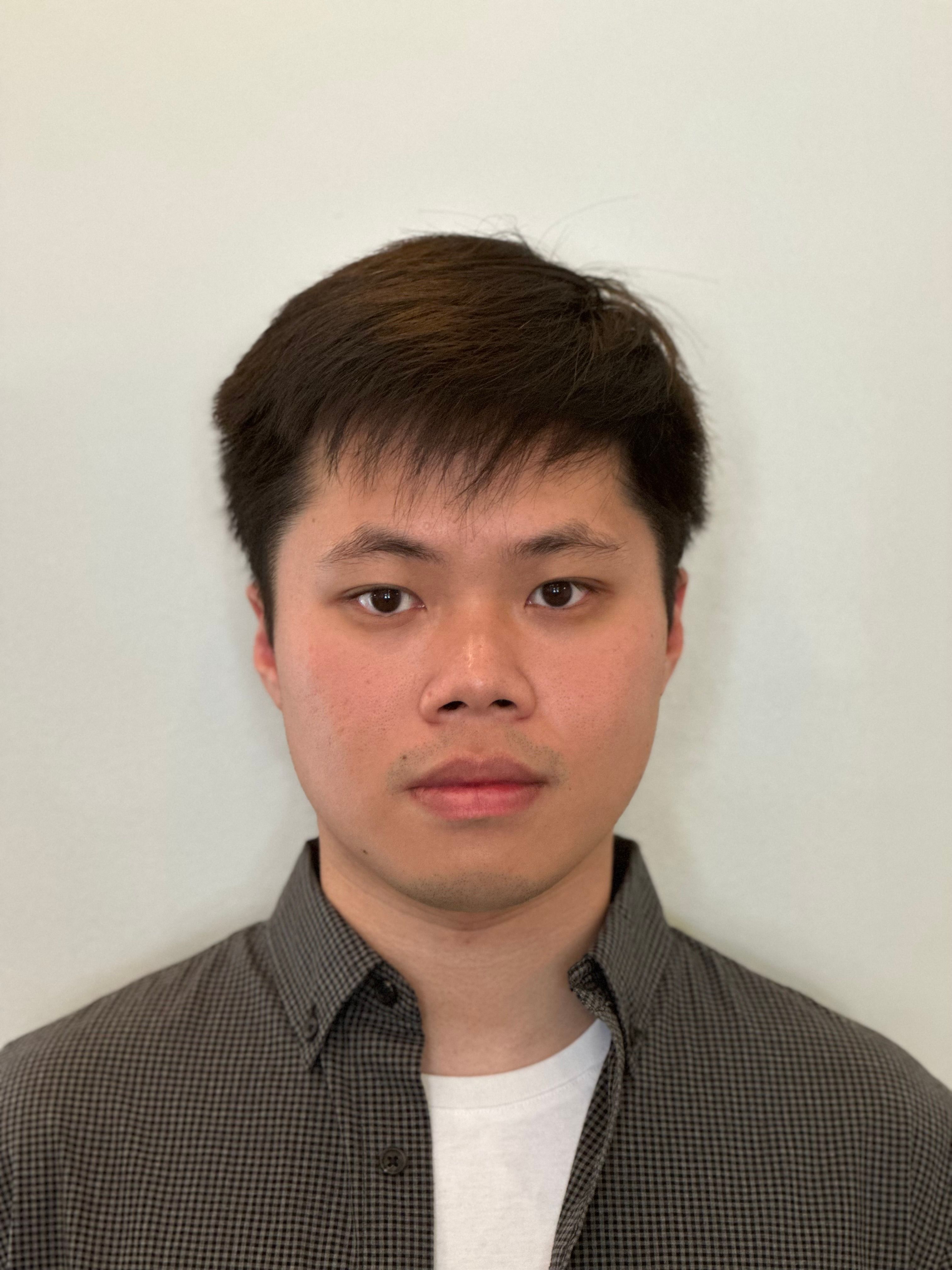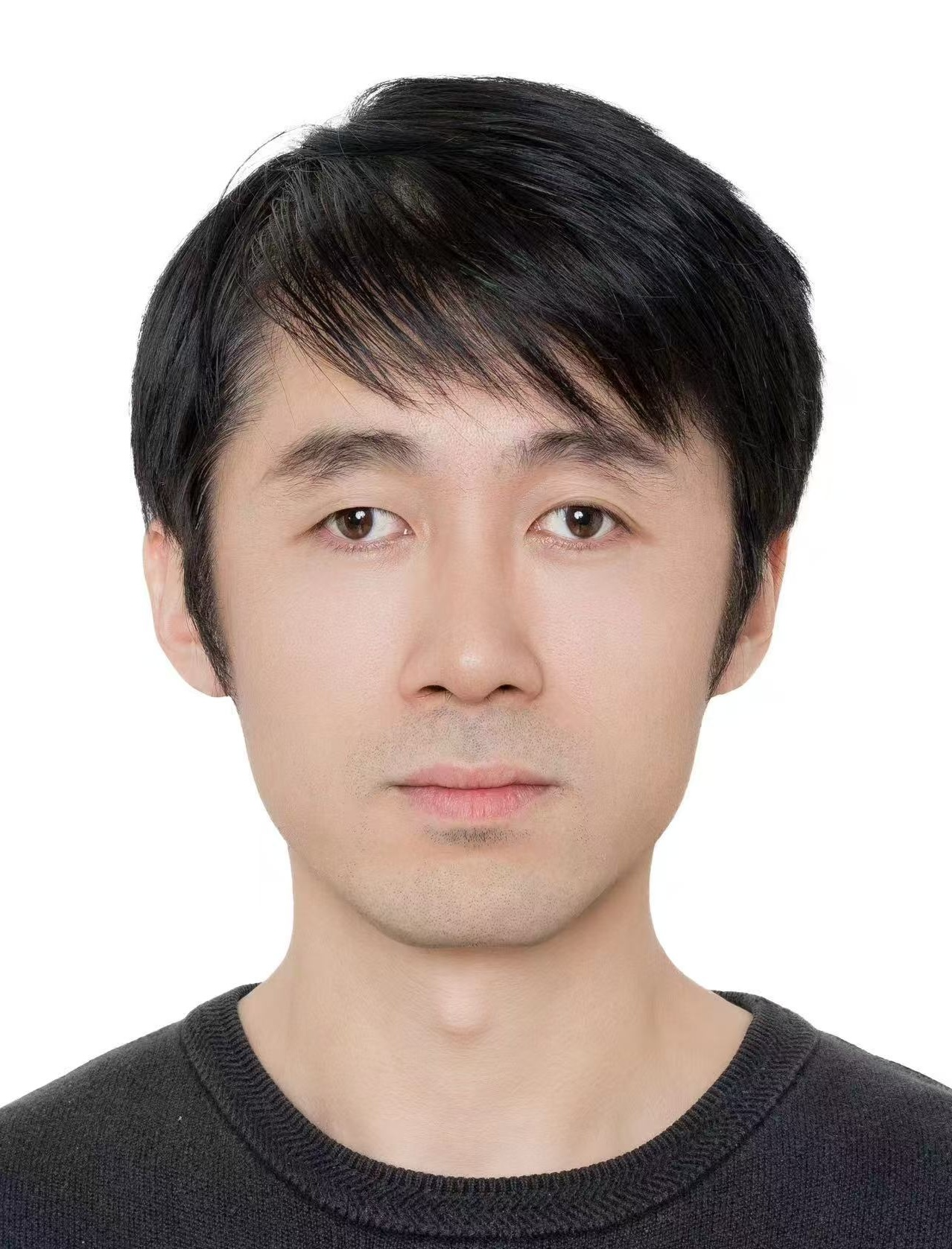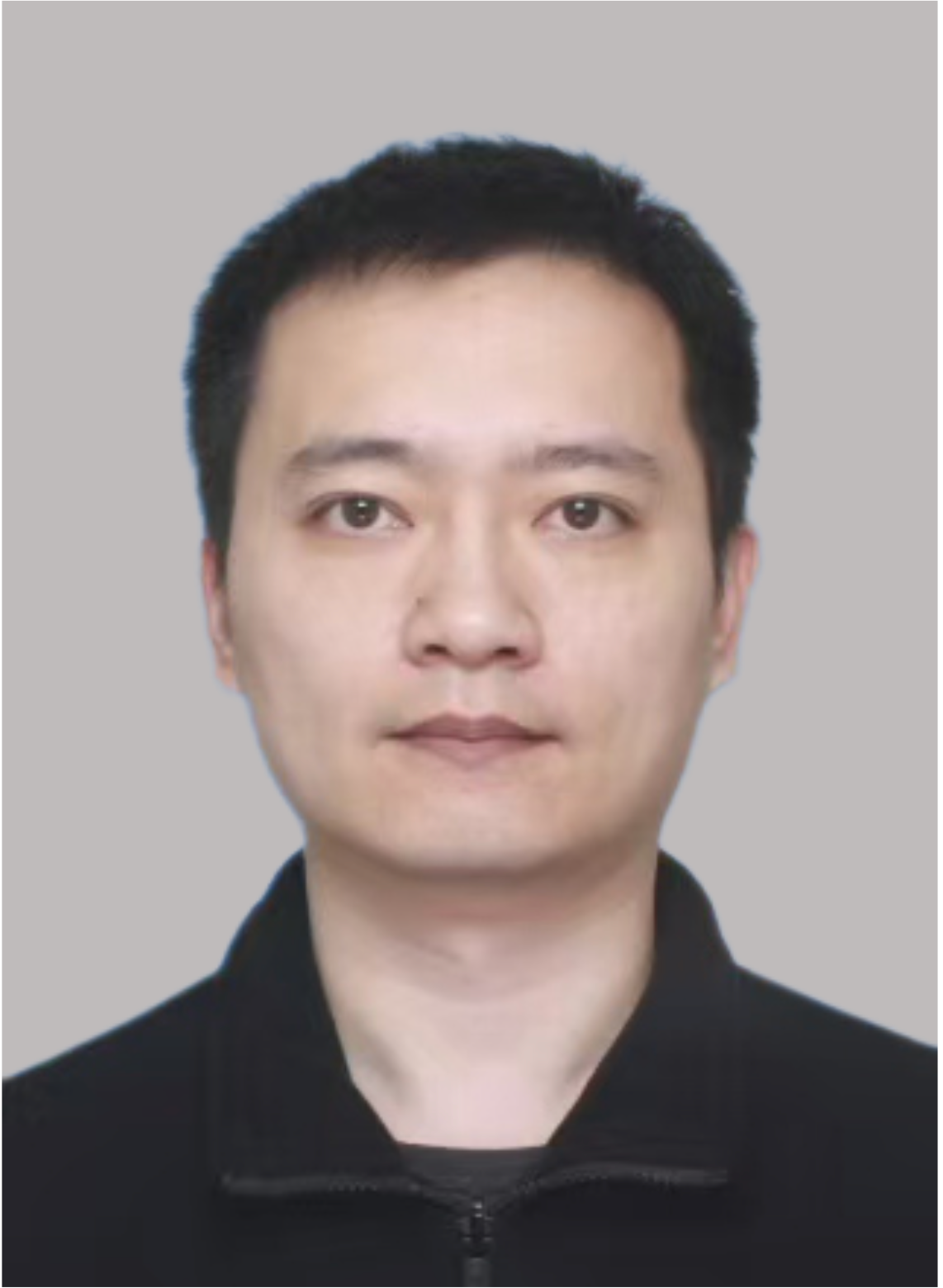Schedule: September 14
Filter:
Plenary & Tracks
Workshops
Co-located Events
Plenary & Tracks
Workshops
Co-located Events
-
September 14
08:00 - 09:10
注册和领取胸牌
Registration and badge pickup
GOSIM Plenary SessionsKeynote Venue - 318 & 328
注册和领取胸牌开始
Registration and badge pickup starts
-
September 14
08:30 - 09:10
早餐
Breakfast
GOSIM Plenary SessionsKeynote Venue - 318 & 328
早餐
Breakfast
-
September 14
09:15 - 09:25
全体大会:开场致辞 第二天
Plenary: Opening Remarks Day 2
GOSIM Plenary SessionsKeynote Venue - 318 & 328
由Second State创始人、GOSIM发起人Michael Yuan致开场辞。
Opening Remarks by Michael Yuan, Founder of Second State, Founder of GOSIM.
-
September 14
09:25 - 09:40
开放数据、开放算力与开放评测:推动具身智能创新
Open Data, Open Compute and Open Evaluation for Embodied AI innovation
GOSIM Plenary SessionsKeynote Venue - 318 & 328
由北京智源人工智能研究院副院长兼首席工程师林咏华发表主题演讲。
Keynote by Yonghua Lin, VP & Chief Engineer, BAAI.
-
September 14
09:25 - 09:35
Rust for Linux 最新进展
Rust for Linux
RustChinaConf & Rust Global China PlenaryVenue 11 - 287
Rust for Linux 最新进展
Rust for Linux
-
September 14
09:35 - 10:05
从Go到Rust:Rust在Tbps级直播协议栈上的落地
From Go to Rust: Rust's Implementation in Tbps-level Live Streaming Protocol Stack
RustChinaConf & Rust Global China PlenaryVenue 11 - 287
从Go到Rust:Rust在Tbps级直播协议栈上的落地
From Go to Rust: Rust's Implementation in Tbps-level Live Streaming Protocol Stack
-
September 14
09:40 - 09:55
全体大会:AI产业范式转变的若干个核心命题
Plenary: Several Core Propositions on the Paradigm Shift of the AI Industry
GOSIM Plenary SessionsKeynote Venue - 318 & 328
由奇点智能研究院院长,CSDN高级副总裁李建忠发表主题演讲。
Keynote by Jason Li, President, Singularity Intelligence Research Institute, Senior Vice President, CSDN.
-
September 14
10:05 - 10:35
工业级 Rust 验证
Industrial-grade Rust Verification
RustChinaConf & Rust Global China PlenaryVenue 11 - 287
工业级 Rust 验证
Industrial-grade Rust Verification
-
September 14
10:15 - 10:50
面向国产智能算力的大模型训推优化平台
Large Model Training and Inference Optimization Platform for Indigenous Intelligent Computing Power
AI Models x InfraVenue 4 - 338
本讲介绍清程极智以国产智能算力提升为核心应用场景,设计开发面向国产大模型的训推优化平台,采用自研赤兔推理引擎,设计训练及微调统一框架、提出混合精度和低比特量化优化方案,在保持计算精度及通用问题求解能力的同时,大幅度提升模型的计算速度、降低计算资源消耗的工程和产品实践。通过拆解大模型推理引擎的挑战和优化技术,展示国产推理引擎与国产智能算力适配的性能优势,以及在此基础之上,如何通过推理引擎的系统优化,达到E2E业务应用Benchmark优化的目的。
This presentation introduces Qingcheng.ai's design and development of a training and inference optimization platform for indigenous large models, with improving indigenous intelligent computing power as the core application scenario. The platform adopts the self-developed Chitu inference engine, designs a unified framework for training and fine-tuning, and proposes hybrid precision and low-bit quantization optimization schemes. While maintaining computational accuracy and general problem-solving capabilities, it significantly improves model computational speed and reduces computational resource consumption through engineering and product practices.
-
September 14
10:15 - 10:50
面向物理AI的Cosmos世界基础模型
Cosmos World Foundation Models for Physical AI
Embodied AIVenue 2 - 258
面向物理AI的Cosmos世界基础模型
Cosmos World Foundation Models for Physical AI
-
September 14
10:15 - 10:50
第一人称项目:在个人AI智能体中建立信任
The First Person Project: Establishing Trust in Personal AI Agents
Agentic WebVenue 1 - 278
个人AI智能体是AI中最令人兴奋的领域之一。它们有潜力在成千上万的个人任务、项目和决策中为个人提供帮助。但是要让个人AI智能体代表个人采取行动,它们必须获得其委托人的明确信任和许可。本次演讲探讨在人类与AI智能体之间建立信任关系的根本挑战,包括同意、权威委托、隐私保护和问责制等问题。我们研究信任框架、密码学证明系统和治理模型的技术解决方案,这些解决方案能够实现安全且有益的个人AI智能体部署。
Personal AI agents are one of the most exciting areas in AI. They have the potential to assist individuals in thousands of personal tasks, projects, and decisions. But for personal AI agents to take action on behalf of individuals, they must have the explicit trust and permission of their principals. This presentation explores the fundamental challenges of establishing trust relationships between humans and AI agents, including issues of consent, delegation of authority, privacy protection, and accountability. We examine technical solutions for trust frameworks, cryptographic proof systems, and governance models that can enable safe and beneficial personal AI agent deployment.
-
September 14
10:15 - 10:50
kOS:下一代自主智能系统
kOS: The Next Generation of Autonomous Intelligent Systems
Apps x AgentsVenue 5 - 358
本次演讲围绕kOS Agentic System的演进历程,探讨下一代自主智能系统的发展方向与实现路径。我们研究能够实现真正自主决策的架构创新、多模态AI能力的集成,以及创建能够独立运行同时保持安全性和可靠性的系统所面临的挑战。演讲涵盖实际应用、系统设计原则,以及自主智能平台的未来路线图。
This presentation focuses on the evolution journey of the kOS Agentic System, exploring the development directions and implementation paths of next-generation autonomous intelligent systems. We examine the architectural innovations that enable truly autonomous decision-making, the integration of multi-modal AI capabilities, and the challenges of creating systems that can operate independently while maintaining safety and reliability. The talk covers practical applications, system design principles, and the future roadmap for autonomous intelligent platforms.
-
September 14
10:15 - 10:50
智能时代协同创新
Collaborative Innovation in the Age of Intelligence
AI NextKeynote Venue - 318 & 328
2024年诺贝尔物理学奖授予霍普菲尔德和欣顿,以表彰他们"通过人工神经网络实现机器学习的基础性发现和发明"。2024年诺贝尔化学奖颁发给大卫·贝克、哈萨比斯和约翰·迈克尔·江珀,以表彰其在蛋白质设计和预测方面的贡献,这些重大事件,标志着人类智能时代的到来。本次演讲探讨从个人创新到协同智能的范式转变,研究AI系统和人类创造力如何协同工作,以应对复杂的全球挑战并推动前所未有的科学突破。
The 2024 Nobel Prize in Physics was awarded to Hopfield and Hinton for their foundational discoveries and inventions that enable machine learning through artificial neural networks. The 2024 Nobel Prize in Chemistry was awarded to David Baker, Hassabis, and Jumper for their contributions to protein design and prediction. These major events mark the arrival of the human intelligence age. This presentation explores the paradigm shift from individual innovation to collaborative intelligence, examining how AI systems and human creativity can work together to address complex global challenges and drive unprecedented scientific breakthroughs.
-
September 14
10:15 - 10:50
SGLang:一个高效的开源大规模LLM服务框架
SGLang: An Efficient Open-Source Framework for Large-Scale LLM Serving
SGLang WorkshopVenue 3 - 268
SGLang是一个高效的开源大规模LLM服务框架。在过去的一年中,SGLang经历了快速的迭代和发展,本次Talk将概括性地介绍SGLang的核心特性,主要包括:KV Cache重用、Zero-overhead批调度、投机采样、Prefill & Decode分离和大规模专家并行。
SGLang is an efficient open-source framework for large-scale LLM serving. Over the past year, SGLang has experienced rapid iteration and significant advancements. This presentation presents an overview of SGLang's leading features, including KV Cache Reuse, Zero-overhead Batch Scheduling, Speculative Decoding, Prefill/Decode Disaggregation, and Large-scale Expert Parallelism.
-
September 14
10:15 - 10:35
DORA-RS 高性能计算框架在具身机器人中的应用
Application of the DORA-RS High-Performance Computing Framework in Embodied Robotics
Dora WorkshopVenue 7 - B02
本次演讲介绍dora-rs框架的内在优势及其在多个具身机器人平台上的具体应用——以基于dora-rs的抓取和分拣系统为例。
This presentation introduces the intrinsic advantages of the dora-rs framework and its concrete applications across multiple embodied robotics platforms — exemplified by dora-rs-enabled grasping and sorting systems.
-
September 14
10:15 - 10:25
开场致辞
Opening Remarks
AI for Education WorkshopVenue 8 - B03
开场致辞
Opening Remarks
-
September 14
10:15-10:35
开源创新国际合作示范区的概念与实施
Concept and Implementation of an Open-Source Innovation International Cooperation Demonstration Zone
Open Source Globalization WorkshopVenue 9 - B05
开源的核心是制度创新,无论是美国、欧盟还是中国,开源的障碍都是各自国内数千年以来基于物理世界独占排他属性所形成的传统思想、文化、价值观及规则体系。另外,世界各国在发展数字经济及数字化转型过程中,迫切需要安全可靠的数字公共产品及服务,这远超传统基于地域空间所建立的现有国际组织体系所管辖的范畴,需要新技术、新思维、新模式,更需要更广泛的国际合作。
The core of open source is institutional innovation. Whether it's the United States, European Union, or China, the obstacles to open source are the traditional thoughts, cultures, values, and rule systems formed over thousands of years based on the exclusive properties of the physical world. Additionally, countries around the world urgently need secure and reliable digital public goods and services in developing their digital economies and digital transformation, which far exceeds the scope of existing international organizational systems established based on geographical spaces, requiring new technologies, new thinking, new models, and broader international cooperation.
-
September 14
10:25 - 10:45
教育要素视角下的教育生态变迁
Educational Ecological Changes from the Perspective of Educational Elements
AI for Education WorkshopVenue 8 - B03
教育要素视角下的教育生态变迁
Educational Ecological Changes from the Perspective of Educational Elements
-
September 14
10:35 - 10:55
Dora-rs用Rust赋能下一代机器人开发
Leveraging Rust, Dora-rs is empowering next-generation robotics development
Dora WorkshopVenue 7 - B02
介绍dora的技术架构,基于dora开发的机器人案例以及dora中文社区的建设。
Introduction to Dora's technical architecture, robotics cases developed based on Dora, and the construction of the Dora Chinese community.
-
September 14
10:35-10:55
跨越边界:将开源创新打造为全球商业产品
Crossing Borders: Turning Open Source Innovation into a Global Business
Open Source Globalization WorkshopVenue 9 - B05
在这个数字化无限可能的时代,开源不仅是技术创新的象征,也是全球商业扩张的关键驱动力。本次演讲将带您了解开源项目从起步到跨越国界、进入全球市场的历程。作为从开源社区起步并成功将其转化为全球业务的创始人,我将分享开源创新如何打破地域壁垒,获得全球企业和投资者的支持。我们将探讨如何利用开源构建可持续的商业模式,应对不同市场的挑战,并实现全球商业化。通过真实案例研究,我将分析如何将技术热情和社区支持转化为长期商业成功。
In this age of limitless digital possibilities, open source is not only a symbol of technological innovation but also a key driver of global business expansion. This talk will take you through the journey of open source projects from inception to crossing borders and entering global markets. As a founder who started in the open source community and successfully turned it into a global business, I will share how open source innovation can break regional barriers and gain the support of global enterprises and investors. We will explore how to build a sustainable business model using open source, tackle challenges in different markets, and commercialize globally. Through real-life case studies, I will analyze how to turn technological passion and community support into long-term business success.
-
September 14
10:35 - 11:05
使用Slang和Rust实现单源跨平台GPU科学计算
Single-source cross-platform GPU scientific computing with Slang and Rust
RustChinaConf & Rust Global China PlenaryVenue 11 - 287
使用Slang和Rust实现单源跨平台GPU科学计算
Single-source cross-platform GPU scientific computing with Slang and Rust
-
September 14
10:45 - 11:05
AI 时代教师的转型:从知识传播者到知识管理师
The Transformation of Teachers in the AI Era: From Knowledge Communicators to Knowledge Managers
AI for Education WorkshopVenue 8 - B03
AI 时代教师的转型:从知识传播者到知识管理师
The Transformation of Teachers in the AI Era: From Knowledge Communicators to Knowledge Managers
-
September 14
10:50 - 11:25
vLLM:人人可用的简单、快速且低成本的大模型服务方案
vLLM: Easy, Fast, and Cheap LLM Serving for Everyone
AI Models x InfraVenue 4 - 338
vLLM是一个快速且易于使用的大语言模型推理和服务库。在这次演讲中,我将简要介绍vLLM项目的发展历程、背后的开源社区,并重点介绍一些用户感兴趣的功能特性。
vLLM is a fast and easy-to-use library for LLM inference and serving. In this talk, I will briefly introduce the evolution of the vLLM project, the open-source community behind it, and highlight some features that are interesting to many users.
-
September 14
10:50 - 11:25
具身大小脑操作框架与具身大脑模型构建
Embodied Cerebrum-Cerebellum Operation Framework and Brain Model Construction
Embodied AIVenue 2 - 258
具身大小脑操作框架与具身大脑模型构建
Embodied Cerebrum-Cerebellum Operation Framework and Brain Model Construction
-
September 14
10:50 - 11:25
面向智能体网络的去中心化标识符(DID)
Decentralized Identifiers (DIDs) for the Agentic Web
Agentic WebVenue 1 - 278
智能体网络需要独立于中央权威机构和中介机构的数字身份。本次演讲将介绍去中心化标识符(DID)的技术、当前活动和社区,DID能够为AI智能体和自主系统提供可验证的自主数字身份。我们探讨DID如何为智能体间交互提供安全、隐私保护的身份管理,在分布式AI系统中实施去中心化身份的挑战,以及区块链和加密技术在确保智能体网络生态系统中信任和真实性方面的作用。
The Agentic Web needs digital identity that is independent of central authorities and intermediaries. This talk will present the technology, current activities, and the community of Decentralized Identifiers (DIDs), which enable verifiable, self-sovereign digital identity for AI agents and autonomous systems. We explore how DIDs can provide secure, privacy-preserving identity management for agent-to-agent interactions, the challenges of implementing decentralized identity in distributed AI systems, and the role of blockchain and cryptographic technologies in ensuring trust and authenticity in the agentic web ecosystem.
-
September 14
10:50 - 11:25
AI个性化记忆操作系统的构建
The Construction of AI Personalized Memory Operating System
Apps x AgentsVenue 5 - 358
AI个性化记忆操作系统的构建
The Construction of AI Personalized Memory Operating System
-
September 14
10:50 - 11:25
大规模主权AI:欧洲基础模型的数据管道与科研基础设施
Sovereign AI at Scale: Data Pipelines and Research Infrastructures for European Foundation Models
AI NextKeynote Venue - 318 & 328
大规模主权AI:欧洲基础模型的数据管道与科研基础设施
Sovereign AI at Scale: Data Pipelines and Research Infrastructures for European Foundation Models
-
September 14
10:50 - 11:25
基于Mooncake的SGLang Prefill/Decode分离方案
SGLang Prefill/Decode Disaggregation with Mooncake
SGLang WorkshopVenue 3 - 268
大语言模型(LLM)推理包含两个不同的阶段:Prefill和Decode。Prefill阶段是计算密集型的,处理整个输入序列,而Decode阶段是内存密集型的,管理用于生成token的键值(KV)缓存。传统上,这些阶段在统一引擎内处理,其中prefill和decode批次的组合调度会带来效率低下的问题。为了解决这些挑战,我们在SGLang中引入了Prefill和Decoding(PD)分离,这使得能够为每个阶段进行定制优化。
Large Language Model (LLM) inference comprises two distinct phases: Prefill and Decode. The Prefill phase is computation-intensive, processing the entire input sequence, while the Decode phase is memory-intensive, managing the Key-Value (KV) cache for token generation. Traditionally, these phases are handled within a unified engine, where combined scheduling of prefill and decode batches introduces inefficiencies. To address these challenges, we introduce Prefill and Decoding (PD) Disaggregation in SGLang, which enables tailored optimizations for each.
-
September 14
10:55 - 11:15
ADORA双臂轮式人形机器人
ADORA Dual-Arm Wheeled Humanoid Robots
Dora WorkshopVenue 7 - B02
ADORA MAX 和 ADORA Pro:双臂轮式人形机器人掌握自主取放操作
ADORA MAX & ADORA Pro: Dual-Arm Wheeled Humanoid Robots Master Autonomous Pick-and-Place Operations
-
September 14
10:55-11:15
开源AI出海战略:如何打造全球化的开源项目
Open-source AI's Overseas Expansion Strategy: How to Build Global Open-source Projects
Open Source Globalization WorkshopVenue 9 - B05
很多中国开源/AI项目在国内小有名气,却难以走向全球。本演讲将揭示开源出海的四大误区,解析2025全球主战场与趋势,并结合真实案例,分享如何通过社区运营与战略布局,让你的项目在国际开发者中脱颖而出。
Many Chinese open-source/AI projects have gained some recognition domestically but struggle to go global. This talk will reveal the four major misconceptions about open source globalization, analyze the main global battlefields and trends for 2025, and share how to make your project stand out among international developers through community operations and strategic planning, using real case studies.
-
September 14
11:05 - 11:25
为全球每一个人提供高品质的人工智能 STEM 教育辅导服务
Deliver High Quality AI STEM Tutor to Everyone, Everywhere
AI for Education WorkshopVenue 8 - B03
由于成本、地理位置和熟练教师的有限可用性,数百万学生仍然无法获得高质量的辅导服务。本次演讲展示了一个愿景:建立一个经济实惠的AI驱动STEM辅导平台,能够为全球学生提供个性化、自适应的学习体验。我们探讨可扩展AI辅导系统背后的技术架构、创建文化敏感教育内容的挑战,以及使高质量STEM教育为全球服务不足的社区提供服务的实际实施策略。
Access to high-quality tutoring remains out of reach for millions of students due to cost, geography, and limited availability of skilled teachers. This talk presents a vision for an affordable, AI-powered STEM tutoring platform that can deliver personalized, adaptive learning experiences to students worldwide. We explore the technical architecture behind scalable AI tutoring systems, the challenges of creating culturally sensitive educational content, and the practical implementation strategies for making high-quality STEM education accessible to underserved communities globally.
-
September 14
11:05 - 11:35
基于rust的组件化内核设计方法与关键技术研究
Component-based Kernel Design Methods and Key Technology Research Based on Rust
RustChinaConf & Rust Global China PlenaryVenue 11 - 287
基于rust的组件化内核设计方法与关键技术研究
Component-based Kernel Design Methods and Key Technology Research Based on Rust
-
September 14
11:15 - 11:35
Dora 与 Isaacsim 的结合
Integration of Dora with Isaacsim
Dora WorkshopVenue 7 - B02
Dora 与 Isaacsim 的结合
Integration of Dora with Isaacsim
-
September 14
11:15-11:35
AI 开源生态的协作与责任
Collaboration and Responsibility in the Open-Source AI Ecosystem
Open Source Globalization WorkshopVenue 9 - B05
开源让AI发展得更快、更开放,但同时也带来了责任挑战,比如模型偏见和合规风险。在这次分享中,我会谈谈开源社区如何协作,以及我们该如何在开放与责任之间找到平衡。
Open source makes AI development faster and more open, but it also brings responsibility challenges, such as model bias and compliance risks. In this sharing, I will talk about how the open source community collaborates and how we should find a balance between openness and responsibility.
-
September 14
11:25 - 12:00
蚂蚁多模态大模型实践
Multimodal Large Language Model Practices at Ant Group
AI Models x InfraVenue 4 - 338
介绍蚂蚁在大模型领域Ming-Omni系列开源工作,分享在多模态大模型架构演进、跨模态融合、生成与理解统一等技术领域的实践与进展。通过模型架构、训练过程的联合设计与优化,致力于打造模型全模态能力,实现能看、能听、能说、能画的多模态基础模型。
Introduction to Ant Group's Ming-Omni series open-source work in the large model field, sharing practices and progress in multimodal large model architecture evolution, cross-modal fusion, and unified generation and understanding. Through joint design and optimization of model architecture and training processes, we are committed to building comprehensive modal capabilities for models, achieving multimodal foundation models that can see, hear, speak, and draw.
-
September 14
11:25 - 12:00
HopeJr:面向所有人的500美元开源人形机械臂
HopeJr: A $500 Open-Source Humanoid Arm for Everyone
Embodied AIVenue 2 - 258
概述一个500美元的开源人形机械臂和手套系统,支持实时学习和远程操作。我们将探讨AI、机器人和嵌入式系统如何融合,为个人创作者和研究人员提供可访问的人形机器人技术。本次演讲涵盖设计理念、技术架构、制造考虑因素,以及使全球制造者、学生和研究人员都能使用先进机器人技术的社区开发模式。我们研究集成挑战、控制系统,以及人形机器人开发民主化的潜力。
An overview of a $500 open-source humanoid arm and glove system enabling real-time learning and teleoperation. We'll explore how AI, robotics, and embedded systems merge to empower individual creators and researchers with accessible humanoid robotics technology. This presentation covers the design philosophy, technical architecture, manufacturing considerations, and community development model that makes advanced robotics accessible to makers, students, and researchers worldwide. We examine the integration challenges, control systems, and the potential for democratizing humanoid robotics development.
-
September 14
11:25 - 12:00
探索与实践智能体WebApp开发
Exploring and Practicing Agentic WebApp Development
Agentic WebVenue 1 - 278
探索与实践智能体WebApp开发
Exploring and Practicing Agentic WebApp Development
-
September 14
11:25 - 12:00
Second Me:用你的观点、经历与记忆,训练你的个人大模型
Second Me: Train Your Personal Large Model with Your Views, Experiences, and Memories
Apps x AgentsVenue 5 - 358
Second Me 目标是训练一个由你的记忆塑造的个人大模型。它以你的观点与经历(以及你日常记录的思考)为核心语料,让 AI 不再只是知识库,而是能带着你的表达、偏好和界限。我们将展示Second Me背后的思考,实践过程中的经验,Second Me在实际产品中的使用,以及一些待探讨的问题。
Second Me aims to train a personal large model shaped by your memories. It uses your views and experiences (as well as your daily recorded thoughts) as core training data, making AI no longer just a knowledge base, but something that can carry your expression, preferences, and boundaries. We will demonstrate the thinking behind Second Me, practical experiences during development, the use of Second Me in actual products, and some issues that need to be explored.
-
September 14
11:25 - 12:00
UCM面向稀疏化注意力加速的推理架构设计分享
Sharing on the Design of UCM Inference Architecture for Sparse Attention Acceleration
AI NextKeynote Venue - 318 & 328
随着大模型参数与上下文窗口同步膨胀,稠密注意力计算已成为线上推理的绝对瓶颈——显存占用呈二次曲线、延迟随序列长度线性飙升。业界普遍采用KVCache+投机解码来缓解,但在超长序列的极限场景下仍捉襟见肘。本次分享聚焦「稀疏注意力」这一新范式,从算法、插件化设计到软件实现,首次系统性公开我们自研UCM推理记忆数据管理器的稀疏化推理栈的架构设计思路与落地经验。
As large model parameters and context windows continue to expand simultaneously, dense attention computation has become the absolute bottleneck for online inference—memory usage follows a quadratic curve, and latency scales linearly with sequence length. The industry commonly adopts KVCache + speculative decoding to mitigate this, but it still falls short in extreme scenarios with ultra-long sequences. This sharing focuses on the "sparse attention" paradigm, systematically presenting for the first time our self-developed UCM inference memory data manager's sparse inference stack architectural design and implementation experience, from algorithms and plugin design to software implementation.
-
September 14
11:25 - 12:00
讯飞MaaS平台大模型高性能推理实践
High-Performance Inference Practice for Large Language Models on iFLYTEK MaaS Platform
SGLang WorkshopVenue 3 - 268
讯飞基于开源引擎结合自身推理服务框架在PD分离上的相关技术介绍。
Technical introduction of iFLYTEK's PD (Prefill-Decode) separation approach based on open-source engines combined with their own inference service framework.
-
September 14
11:25 - 12:00
圆桌会议:未来学校新样态:人机共生的教育生态
Roundtable meeting: Future School Paradigm: Human-Machine Symbiotic Educational Ecosystem
AI for Education WorkshopVenue 8 - B03
圆桌会议:未来学校新样态:人机共生的教育生态
Roundtable meeting: Future School Paradigm: Human-Machine Symbiotic Educational Ecosystem
-
September 14
11:35 - 11:55
基于OpenHarmony的Dora开发实践
Dora Development Practices on OpenHarmony
Dora WorkshopVenue 7 - B02
本次分享将介绍在OpenHarmony上进行Dora开发的常见挑战和实用建议。主要内容包括:开发环境搭建、交叉编译策略、硬件适配方法、调试技术和性能优化。演讲将为希望在OpenHarmony平台上实现基于Dora的机器人解决方案的开发者提供实践指导,涵盖技术实现细节和实际部署考虑因素。
This session shares common challenges and practical recommendations for Dora development on OpenHarmony. Key topics include: development environment setup, cross-compilation strategies, hardware adaptation methods, debugging techniques, and performance optimization. The presentation will provide hands-on guidance for developers looking to implement Dora-based robotics solutions on the OpenHarmony platform, covering both technical implementation details and practical deployment considerations.
-
September 14
11:35-12:15
圆桌会议:开源出海的机会与挑战
Roundtable meeting: Opportunities and Challenges of Open Source Globalization
Open Source Globalization WorkshopVenue 9 - B05
关于开源出海的机会与挑战的圆桌会议。
A roundtable discussion on the opportunities and challenges of open source globalization.
-
September 14
11:35 - 12:10
使用 Rust 构建 MCP Server 与 Client:为 Agent 注入强大引擎
Building MCP Server and Client with Rust: Injecting Powerful Engines into Agents
RustChinaConf & Rust Global China PlenaryVenue 11 - 287
使用 Rust 构建 MCP Server 与 Client:为 Agent 注入强大引擎
Building MCP Server and Client with Rust: Injecting Powerful Engines into Agents
-
September 14
12:00 - 14:00
午餐
Lunch
Dora WorkshopVenue 2 - 258
午餐
Lunch
-
September 14
14:00 - 14:20
大规模释放GenAI推理能力:深入解析llm-d项目
Unleashing GenAI Inference at Scale: A Deep Dive into the llm-d Project
AI Models x InfraVenue 4 - 338
大规模释放GenAI推理能力:深入解析llm-d项目
Unleashing GenAI Inference at Scale: A Deep Dive into the llm-d Project
-
September 14
14:00 - 14:35
以Zenoh驱动ROS 2的未来:快速、可扩展且具备弹性的机器人与自主系统通信
Powering the Future of ROS 2 with Zenoh: Fast, Scalable, and Resilient Communication for Robotics and Autonomy
Embodied AIVenue 2 - 258
现代机器人、车联网和自主系统需要快速、可扩展且弹性的通信。Zenoh统一了发布/订阅、查询和存储,提供低延迟、一级ROS 2中间件rmw_zenoh,以及无缝的边缘到云集成。本次演讲探讨Zenoh如何革命性地改变机器人通信架构,使分布式系统能够从单个机器人扩展到大规模机群,同时保持实时性能和容错能力。我们研究实际部署场景、性能基准以及下一代机器人基础设施的路线图。
Modern robotics, V2V, and autonomous systems need fast, scalable, and resilient communication. Zenoh unifies pub/sub, queries, and storage, offering low latency, Tier-1 ROS 2 middleware rmw_zenoh, and seamless edge-to-cloud integration. This presentation explores how Zenoh revolutionizes robotics communication architectures, enabling distributed systems that can scale from single robots to massive fleets while maintaining real-time performance and fault tolerance. We examine practical deployment scenarios, performance benchmarks, and the roadmap for next-generation robotics infrastructure.
-
September 14
14:00 - 14:35
TMCP/TA2A:在TSP上运行MCP和A2A
TMCP/TA2A: Running MCP and A2A over TSP
Agentic WebVenue 1 - 278
TMCP/TA2A:在TSP上运行MCP和A2A
TMCP/TA2A: Running MCP and A2A over TSP
-
September 14
14:00 - 14:30
基于LLM的辅助作战Agent在多单位即时战略游戏(RTS)中的可行性与实现
Feasibility and Implementation of LLM-based Auxiliary Combat Agents in Multi-unit Real-Time Strategy (RTS) Games
Apps x AgentsVenue 5 - 358
探讨大型语言模型(LLM)在多单位即时战略游戏(RTS)中作为辅助作战 Agent 的可行性及其具体实现方式。不同于传统基于规则或启发式的 AI 系统,基于 LLM 的 Agent 能够通过自然语言理解解析玩家的高层次指令和抽象语言,并将其动态转化为可执行的游戏操作。我们分析了实现过程中的关键问题,包括 玩家语义理解 指令学习理解 游戏结构学习 游戏状态理解 执行内容输出 错误纠正,以及在实时性与准确性权衡中的挑战。
This talk explores the feasibility and specific implementation of Large Language Models (LLMs) as auxiliary combat agents in multi-unit Real-Time Strategy (RTS) games. Unlike traditional rule-based or heuristic AI systems, LLM-based agents can understand and parse players' high-level commands and abstract language through natural language understanding, and dynamically convert them into executable game operations. We analyze key issues in the implementation process, including player semantic understanding, command learning comprehension, game structure learning, game state understanding, execution content output, and error correction, as well as challenges in real-time performance and accuracy trade-offs.
-
September 14
14:00 - 14:35
迈向生物通用智能
Towards Biological General Intelligence
AI NextKeynote Venue - 318 & 328
迈向生物通用智能
Towards Biological General Intelligence
-
September 14
14:00 - 14:35
和SGLang一起思考:推理赋能强化学习时代的模型训练
Thinking with SGLang: Inference empowering Training in the Reinforcement Learning Era
SGLang WorkshopVenue 3 - 268
使LLM通过强化学习和测试时间扩展(TTS)改进其输出现在是一种趋势,这导致了推理引擎在模型训练中的采用和前所未有的重要性。在本次演讲中,我们将回顾SGLang在强化学习场景下的最新进展和社区采用情况。
Enabling LLMs to improve their outputs with reinforcement learning and test-time scaling (TTS) is now a tendency, which leads to the adoption and unprecedented importance of inference engines in model training. In this presentation, we will go through the recent progress and community adoption in SGLang under RL scenarios.
-
September 14
14:00 - 14:20
DoRobot:集成Dora、ROS与LeRobot的容器化具身智能操作系统
DoRobot: A Containerized Embodied Intelligent Operating System Integrating Dora, ROS and LeRobot
Dora WorkshopVenue 7 - B02
DoRobot:集成Dora、ROS与LeRobot的容器化具身智能操作系统
DoRobot: A Containerized Embodied Intelligent Operating System Integrating Dora, ROS and LeRobot
-
September 14
14:00 - 17:30
嵌入式Rust用于AI
Embedded Rust for AI
Embedded Rust x AI WorkShopTBD Venue
嵌入式Rust用于AI
Embedded Rust for AI
-
September 14
14:00 - 17:30
如何使用Makepad开发应用程序
How to Build Apps with Makepad
Makepad WorkshopVenue 9 - B05
在这个工作坊中,我们将教您如何使用Makepad构建一个简单的应用程序,Makepad是一个基于GPU的现代Rust UI框架,允许编写快速轻量级的应用程序。我们将要构建的应用程序是Makepad功能的简单但功能性演示,展示其独特的GPU加速渲染和声明性UI设计方法。参与者将学习Makepad架构的基础知识、如何创建响应式布局、处理用户交互,以及利用Rust的性能优势在跨平台上创建流畅、原生感觉的应用程序。
In this workshop, we will teach you how to build a simple app with Makepad, a modern GPU-based UI Framework for Rust that allows for writing fast and lightweight apps. The app we are going to build is a simple but functional demonstration of Makepad's capabilities, showcasing its unique approach to GPU-accelerated rendering and declarative UI design. Participants will learn the fundamentals of Makepad's architecture, how to create responsive layouts, handle user interactions, and leverage Rust's performance benefits for creating smooth, native-feeling applications across platforms.
-
September 14
14:00 - 14:30
Rust 中的统一索引架构:从异构索引到统一抽象的工程实践
Unified Index Architecture in Rust: Engineering Practice from Heterogeneous Indexes to Unified Abstraction
Track 1: Rust Global | In-depth Industry ApplicationsVenue 11 - 287
Rust 中的统一索引架构:从异构索引到统一抽象的工程实践
Unified Index Architecture in Rust: Engineering Practice from Heterogeneous Indexes to Unified Abstraction
-
September 14
14:00 - 14:30
Robrix: 一个用于安全 Matrix 聊天的复杂多平台 Rust 应用
Robrix: a complex multi-platform Rust app for secure Matrix chat
Track 2: Evolution of the Language EcosystemVenue 12 - 288
Robrix: 一个用于安全 Matrix 聊天的复杂多平台 Rust 应用
Robrix: a complex multi-platform Rust app for secure Matrix chat
-
September 14
14:00 - 14:30
LanceDB: AI 原生多模态数据湖
LanceDB: The AI-Native Multimodal Lakehouse
Track 3: Rust Innovations in Infrastructure: AI x OSVenue 13 - 289
LanceDB: AI 原生多模态数据湖
LanceDB: The AI-Native Multimodal Lakehouse
-
September 14
14:20 - 14:40
SGLang使能MindSpore框架方案
SGLang enabling MindSpore Framework
AI Models x InfraVenue 4 - 338
目前,SGLang唯一支持的AI框架是PyTorch,并通过torch_npu插件得以在昇腾NPU上运行。我们设计了PyTorch和MindSpore双框架协同运行的方案,充分考虑了跨框架的资源复用,并尽量简化接口,发挥MindSpore在昇腾NPU上的性能优势。开发者能够轻松地将MindSpore模型接入SGLang,而用户的使用流程无任何变化。MindSpore的接入方案也为后续其他框架的接入提供了基础。
Currently, SGLang exclusively supports the PyTorch AI framework and runs on Ascend NPUs through the torch_npu plugin. We designed a dual-framework collaborative solution for PyTorch and MindSpore, fully considering cross-framework resource reuse while simplifying interfaces to leverage MindSpore's performance advantages on Ascend NPUs. Developers can easily integrate MindSpore models into SGLang while maintaining unchanged user workflows. MindSpore's integration solution also provides a foundation for subsequent integration of other frameworks.
-
September 14
14:20 - 14:40
如何将项目从ROS切换到Dora
How to Migrate a Project from ROS to Dora
Dora WorkshopVenue 7 - B02
如何将项目从ROS切换到Dora
How to Migrate a Project from ROS to Dora
-
September 14
14:30 - 15:00
OAKS ASKG:代理-服务器知识图谱
OAKS ASKG: Agent-Server Knowledge Graph
Apps x AgentsVenue 5 - 358
OAKS ASKG:代理-服务器知识图谱
OAKS ASKG: Agent-Server Knowledge Graph
-
September 14
14:30 - 15:00
Rust在MoonBit工具链中的应用以及两者在Wasm应用场景的对比
Application of Rust in the MoonBit Toolchain and Comparison of Both in Wasm Application Scenarios
Track 1: Rust Global | In-depth Industry ApplicationsVenue 11 - 287
Rust在MoonBit工具链中的应用以及两者在Wasm应用场景的对比
Application of Rust in the MoonBit Toolchain and Comparison of Both in Wasm Application Scenarios
-
September 14
14:30 - 15:00
Doctests 是如何工作的
How Doctests Work
Track 2: Evolution of the Language EcosystemVenue 12 - 288
Doctests 是如何工作的
How Doctests Work
-
September 14
14:30 - 15:00
GenUI : Rust前端框架与AI代码生成
GenUI: Rust Frontend Framework and AI Code Generation
Track 3: Rust Innovations in Infrastructure: AI x OSVenue 13 - 289
GenUI : Rust前端框架与AI代码生成
GenUI: Rust Frontend Framework and AI Code Generation
-
September 14
14:35 - 15:10
基于Kornia的易用型智能体视觉计算框架
Accessible Agentic Computer Vision with Kornia
Embodied AIVenue 2 - 258
基于Kornia的易用型智能体视觉计算框架
Accessible Agentic Computer Vision with Kornia
-
September 14
14:35 - 15:20
数据空间中面向智能体AI的自主主权身份和信任基础设施
Self-Sovereign Identity and Trust Infrastructure for Agentic IA in Data Spaces
Agentic WebVenue 1 - 278
数据空间中面向智能体AI的自主主权身份和信任基础设施
Self-Sovereign Identity and Trust Infrastructure for Agentic IA in Data Spaces
-
September 14
14:35 - 15:10
脉冲计算:挑战和机遇
Pulse Computing: Challenges and Opportunities
AI NextKeynote Venue - 318 & 328
本报告主要介绍脉冲计算这一新兴类脑计算范式的核心挑战与关键机遇。脉冲计算以事件驱动和异步信息传递为特征,区别于传统连续同步计算。报告首先聚焦核心挑战:非连续性计算模型的构建难题,探讨如何建立高效、可用的算法框架,随后阐述脉冲计算在模型算法、感知器件融合、神经拟态硬件应用三个方面的潜在应用潜力及前景。
This presentation focuses on the core challenges and key opportunities of spiking computing, an emerging brain-inspired computing paradigm. Spiking computing is characterized by event-driven and asynchronous information processing, distinguishing it from traditional continuous synchronous computing. The presentation first addresses core challenges: the difficulties in constructing discontinuous computing models, exploring how to establish efficient and practical algorithmic frameworks, followed by an exposition of the potential applications and prospects of spiking computing in three areas: model algorithms, sensing device integration, and neuromorphic hardware applications.
-
September 14
14:35 - 15:10
SpecForge: 用于训练投机采样模型的开源框架
SpecForge: Open Source Framework for Training Speculative Decoding Models
SGLang WorkshopVenue 3 - 268
SpecForge: 用于训练投机采样模型的开源框架
SpecForge: Open Source Framework for Training Speculative Decoding Models
-
September 14
14:40 - 15:00
超越OpenAI,打造专属AI:通过微调激活第一方数据
Beat OpenAI and Build the Best AI For You: Mobilizing First-Party Data with Fine-Tuning
AI Models x InfraVenue 4 - 338
Beat OpenAI and Build the Best AI For You: Mobilizing First-Party Data with Fine-Tuning
Beat OpenAI and Build the Best AI For You: Mobilizing First-Party Data with Fine-Tuning
-
September 14
14:40 - 15:00
如何使用 Dora-rs 从零开始制作一个 AI 机器人
How to Build an AI Robot from Scratch Using Dora-rs
Dora WorkshopVenue 7 - B02
本次会议探讨使用Dora-rs的数据流导向机器人架构的实际应用,特别关注人形机器人开发。演讲将展示如何使用Dora的数据流范式从零开始构建AI机器人,涵盖机器人学中数据流编程的基本概念、人形系统的实现策略,以及在Dora框架内传感器集成、决策过程和执行器控制的实际示例。
This session explores the practical application of dataflow-oriented robotic architecture using Dora-rs, specifically focusing on humanoid robot development. The presentation will demonstrate how to build an AI robot from scratch using Dora's dataflow paradigm, covering the fundamental concepts of dataflow programming in robotics, implementation strategies for humanoid systems, and practical examples of sensor integration, decision-making processes, and actuator control within the Dora framework.
-
September 14
15:00 - 15:20
AIKG:大模型驱动的算子自动生成技术探索
AIKG: AI Driven Kernel Generator
AI Models x InfraVenue 4 - 338
AIKG:大模型驱动的算子自动生成技术探索
AIKG: AI Driven Kernel Generator
-
September 14
15:00 - 15:20
从多模态到智能体:AI+AR驱动的人机共生
From Multimodal to Intelligent Agents: AI+AR Driving Human–Machine Symbiosis
Apps x AgentsVenue 5 - 358
从多模态到智能体:AI+AR驱动的人机共生
From Multimodal to Intelligent Agents: AI+AR Driving Human–Machine Symbiosis
-
September 14
15:00 - 15:20
Dora接入与统一启动流程
Dora Integration and the Unified Launch Process
Dora WorkshopVenue 7 - B02
结合开源之夏工作,分享各种外部生态接入Dora并围绕Dora构建统一启动流程的经验。我们探讨生态系统集成的技术挑战、启动工作流程的标准化,以及在Dora和其他机器人框架之间创建无缝互操作性的最佳实践。演讲涵盖实际实施策略、常见集成陷阱,以及创建强大统一开发环境的解决方案。
Building on the Open Source Summer project work, this presentation shares experiences in integrating various external ecosystems with Dora and building unified launch processes around Dora. We explore the technical challenges of ecosystem integration, standardization of launch workflows, and best practices for creating seamless interoperability between Dora and other robotics frameworks. The talk covers practical implementation strategies, common integration pitfalls, and solutions for creating robust, unified development environments.
-
September 14
15:00 - 15:40
Rust 十周年活动 & 茶歇
Rust 10th Anniversary Activity & Tea Break
Track 3: Rust Innovations in Infrastructure: AI x OSVenue 11 - 287
Rust 十周年活动 & 茶歇
Rust 10th Anniversary Activity & Tea Break
-
September 14
15:10 - 15:20
合影
Group Photo
SGLang WorkshopVenue 3 - 268
合影
Group Photo
-
September 14
15:20 - 15:40
茶歇
Tea Break
Dora WorkshopWest Lake State Guesthouse
茶歇
Tea Break
-
September 14
15:40 - 16:15
llama.cpp多模态支持的全面升级
Overhauling Multimodal Support in llama.cpp
AI Models x InfraVenue 4 - 338
llama.cpp多模态支持的全面升级
Overhauling Multimodal Support in llama.cpp
-
September 14
15:40 - 16:15
AIRSPEED:用于具身智能的开源通用数据生产平台
AIRSPEED: An Open-Source General-Purpose Data Generation Platform for Embodied Intelligence
Embodied AIVenue 2 - 258
AIRSPEED:用于具身智能的开源通用数据生产平台
AIRSPEED: An Open-Source General-Purpose Data Generation Platform for Embodied Intelligence
-
September 14
15:40 - 16:15
开源MCP通用访问网关,解决Agent工具孤岛困境
Open Source MCP Universal Access Gateway, Solving Agent Tool Island Dilemma
Agentic WebVenue 1 - 278
MCP 为 AI Agent 提供了强大的动力,但实际应用 MCP 面临诸多挑战。如何无缝整合企业、家庭、移动局域网内MCP Server并全球使用?如何快速发布MCP Server的工具并投入使用?如何有效管理众多的MCP Server并灵活使用?如何按需设置MCP Server及工具访问权限并安全使用?MCPdirect 是一个来自中国香港创业团队的开源MCP通用访问网关,旨在解决MCP生态系统中的这些关键集成和管理挑战。
MCP provides powerful capabilities for AI Agents, but practical MCP implementation faces many challenges. How to seamlessly integrate MCP Servers within enterprise, home, and mobile LANs for global access? How to quickly publish and deploy MCP Server tools? How to effectively manage numerous MCP Servers with flexible usage? How to set up on-demand access permissions for MCP Servers and tools with security? MCPdirect is an open-source MCP Universal Access Gateway from a Hong Kong startup team, designed to solve these critical integration and management challenges in the MCP ecosystem.
-
September 14
15:40 - 16:15
智能始于记忆:打造基于MemOS的记忆管理新范式
Intelligence Begins with Memory: Creating a New Paradigm for Memory Management Based on MemOS
Apps x AgentsVenue 5 - 358
智能始于记忆:打造基于MemOS的记忆管理新范式
Intelligence Begins with Memory: Creating a New Paradigm for Memory Management Based on MemOS
-
September 14
15:40 - 16:15
Ventus OpenGPGPU项目概览
Overview of Ventus OpenGPGPU Project
AI NextKeynote Venue - 318 & 328
Ventus是基于RISC-V及其向量扩展的高性能开源GPGPU,旨在提供可扩展的完全开源GPU解决方案。由清华大学何虎教授主导,该项目在创建可访问、透明和可定制的GPU计算架构方面代表了突破性举措。演讲涵盖Ventus架构的技术基础、其RISC-V向量扩展实现、性能特征,以及通过开源硬件设计实现GPU计算民主化的更广泛意义。
Ventus is a high-performance open-source GPGPU based on RISC-V and its vector Extension to deliver a scalable, fully open-source GPU solution. By Professor Hu He from Tsinghua University, this project represents a groundbreaking initiative in creating accessible, transparent, and customizable GPU computing architectures. The presentation covers the technical foundations of the Ventus architecture, its RISC-V vector extension implementation, performance characteristics, and the broader implications for democratizing GPU computing through open-source hardware design.
-
September 14
15:40 - 16:15
Qwen团队在大模型推理中算法-系统联合优化实践
Joint Algorithm-System Optimization Practices by the Qwen Team in Large Language Model Inference
SGLang WorkshopVenue 3 - 268
Qwen团队在大模型推理中算法-系统联合优化实践
Joint Algorithm-System Optimization Practices by the Qwen Team in Large Language Model Inference
-
September 14
15:40 - 16:00
分布式Dora的开发与探索
Development and Exploration of Distributed Dora
Dora WorkshopVenue 7 - B02
分布式Dora的开发与探索
Development and Exploration of Distributed Dora
-
September 14
15:40 - 16:10
在Linera上用Rust开发应用:微链编程范式
Developing Applications on Linera with Rust: Microchain Programming Paradigm
Track 1: Rust Global | In-depth Industry ApplicationsVenue 11 - 287
在Linera上用Rust开发应用:微链编程范式
Developing Applications on Linera with Rust: Microchain Programming Paradigm
-
September 14
15:40 - 16:10
可执行文件的创建
Creation of an executable
Track 2: Evolution of the Language EcosystemVenue 12 - 288
可执行文件的创建
Creation of an executable
-
September 14
15:40 - 16:10
Rust与WebGPU实现3D高斯溅射
3D Gaussian Splatting with Rust & WebGPU
Track 3: Rust Innovations in Infrastructure: AI x OSVenue 13 - 289
Rust与WebGPU实现3D高斯溅射
3D Gaussian Splatting with Rust & WebGPU
-
September 14
16:00 - 16:20
开放生态中的创新与共建- Dora-rs 社区的活动与展望
Innovation and Collaboration in the Open Ecosystem — The Dora-rs Community's Journey and Vision
Dora WorkshopVenue 7 - B02
本次演讲将深入介绍Dora-rs作为新一代智能机器人高性能开发框架的技术特性与生态发展。演讲将重点展示Dora-rs在开源鸿蒙生态中的创新实践,包括与高校,开源鸿蒙社区,OpenLoong人形机器人的深度合作、以及面向社区提供开发软硬件工具链等。通过分享GOSIM黑客松、展会,社区培训课程等活动经验,展望Dora-rs如何通过开放协作模式,推动国产机器人技术自主可控发展,构建"AI优先"的机器人开发生态。
This presentation will provide an in-depth introduction to the technical characteristics and ecological development of Dora-rs as a new generation of high-performance development framework for intelligent robots. The presentation will focus on showcasing Dora-rs's innovative practices in the open-source HarmonyOS ecosystem, including deep cooperation with universities, open-source HarmonyOS communities, and OpenLoong humanoid robots, as well as providing development software and hardware toolchains for the community. By sharing experiences from GOSIM hackathons, exhibitions, and community training courses, we envision how Dora-rs can promote the autonomous and controllable development of domestic robot technology through an open collaboration model, building an "AI-first" robot development ecosystem.
-
September 14
16:10 - 16:40
基于 Rust 构建商业化数仓平台的探索
Exploration of Building a Commercial Data Warehouse Platform with Rust
Track 1: Rust Global | In-depth Industry ApplicationsVenue 11 - 287
基于 Rust 构建商业化数仓平台的探索
Exploration of Building a Commercial Data Warehouse Platform with Rust
-
September 14
16:10 - 16:40
异步初响:从 #[tokio::main] 感知调度脉搏
The First Echo of Asynchrony: Sensing the Pulse of Scheduling from #[tokio::main]
Track 2: Evolution of the Language EcosystemVenue 12 - 288
异步初响:从 #[tokio::main] 感知调度脉搏
The First Echo of Asynchrony: Sensing the Pulse of Scheduling from #[tokio::main]
-
September 14
16:10 - 16:40
Rust 在端侧的应用:为嵌入式设备开发可扩展的 AI 框架
Rust Applications on the Edge: Developing Scalable AI Frameworks for Embedded Devices
Track 3: Rust Innovations in Infrastructure: AI x OSVenue 13 - 289
Rust 在端侧的应用:为嵌入式设备开发可扩展的 AI 框架
Rust Applications on the Edge: Developing Scalable AI Frameworks for Embedded Devices
-
September 14
16:15 - 16:50
以动态优化将AI推向边缘
Bringing AI to the Edge with Dynamic Optimization
AI Models x InfraVenue 4 - 338
以动态优化将AI推向边缘
Bringing AI to the Edge with Dynamic Optimization
-
September 14
16:15 - 16:50
SpatialLM:用于结构化室内建模的大语言模型训练
SpatialLM: Training Large Language Models for Structured Indoor Modeling
Embodied AIVenue 2 - 258
SpatialLM是一个专为处理3D点云数据并生成结构化3D场景理解输出而设计的大型语言模型。这些输出包括墙壁、门、窗户和家具布置等建筑元素以及精确的空间关系。本次演讲探讨训练语言模型理解空间几何的新颖方法、自然语言处理与3D空间推理桥接的挑战,以及在机器人、AR/VR和智能建筑管理系统中的实际应用。
SpatialLM is a large language model designed to process 3D point cloud data and generate structured 3D scene understanding outputs. These outputs include architectural elements like walls, doors, windows, and furniture arrangements with precise spatial relationships. This presentation explores the novel approaches for training language models to understand spatial geometry, the challenges of bridging natural language processing with 3D spatial reasoning, and practical applications in robotics, AR/VR, and smart building management systems.
-
September 14
16:15 - 16:50
高性能Web引擎
High-Performance Web Engines
Agentic WebVenue 1 - 278
本次演讲探讨高性能Web引擎的现状和未来发展方向,重点关注浏览器引擎优化、渲染性能和计算效率的最新发展。作为W3C高性能Web引擎社区组主席,Martin将讨论新兴标准、引擎开发最佳实践,以及平衡性能与Web兼容性的挑战。演讲涵盖现代优化技术、GPU加速、内存管理策略,以及将AI能力集成到Web引擎中以满足下一代Web应用需求。
This presentation explores the current state and future directions of high-performance web engines, focusing on the latest developments in browser engine optimization, rendering performance, and computational efficiency. As Chair of the W3C High-Performance Web Engines Community Group, Martin will discuss emerging standards, best practices for engine development, and the challenges of balancing performance with web compatibility. The talk covers modern optimization techniques, GPU acceleration, memory management strategies, and the integration of AI capabilities into web engines to meet the demands of next-generation web applications.
-
September 14
16:15 - 16:50
超越关键词的信息检索:大规模解锁法规与标准知识
Information Retrieval Beyond Keywords: Unlocking Regulatory and Standards Knowledge at Scale
Apps x AgentsVenue 5 - 358
超越关键词的信息检索:大规模解锁法规与标准知识
Information Retrieval Beyond Keywords: Unlocking Regulatory and Standards Knowledge at Scale
-
September 14
16:15 - 16:50
神经网络是否可以被严谨地解释清楚?Scaling Law是否会成为大模型永远的桎梏
Can Neural Networks Be Rigorously Explained? Will Scaling Laws Become an Eternal Constraint for Large Models?
AI NextKeynote Venue - 318 & 328
神经网络是否可以被严谨地解释清楚?Scaling Law是否会成为大模型永远的桎梏
Can Neural Networks Be Rigorously Explained? Will Scaling Laws Become an Eternal Constraint for Large Models?
-
September 14
16:15 - 16:50
SGLang on Ascend大模型推理的高效实践
Efficient Practices for LLM Inference with SGLang on Ascend
SGLang WorkshopVenue 3 - 268
华为昇腾架构相比NV GPU架构存在较多不同点,包含芯片的架构、互联、软件栈、编程体系、算子库等,也为sglang on ascend的适配与支持带来诸多挑战。本议题介绍昇腾的体系结构,以及sglang on ascend适配的心路历程与高效实践。我们探讨克服的技术难题、实现的性能优化,以及在将SGLang移植到昇腾生态系统中吸取的经验教训。
The Huawei Ascend architecture differs significantly from NVIDIA GPU architecture, including differences in chip architecture, interconnect, software stack, programming system, and operator libraries, which brings many challenges for SGLang on Ascend adaptation and support. This presentation introduces the Ascend system architecture and shares the journey and efficient practices of SGLang on Ascend adaptation. We explore the technical hurdles overcome, performance optimizations achieved, and lessons learned in porting SGLang to the Ascend ecosystem.
-
September 14
16:40 - 17:10
Palpo Matrix 服务器
Palpo Matrix Server
Track 1: Rust Global | In-depth Industry ApplicationsVenue 11 - 287
Palpo Matrix 服务器
Palpo Matrix Server
-
September 14
16:40 - 17:10
双向并发链表实现
Implementation of Bidirectional Concurrent Linked List
Track 2: Evolution of the Language EcosystemVenue 12 - 288
双向并发链表实现
Implementation of Bidirectional Concurrent Linked List
-
September 14
16:40 - 17:10
超越内存安全:高可用 Rust 基础设施的挑战与实践
Beyond Memory Safety: Challenges and Practices for Highly Available Rust Infrastructure
Track 3: Rust Innovations in Infrastructure: AI x OSVenue 13 - 289
超越内存安全:高可用 Rust 基础设施的挑战与实践
Beyond Memory Safety: Challenges and Practices for Highly Available Rust Infrastructure
-
September 14
16:50 - 17:25
基于Hugging Face实现开源模型的硬件无关加速方案
Hardware-Agnostic Acceleration of Open-Source Models with Hugging Face
AI Models x InfraVenue 4 - 338
基于Hugging Face实现开源模型的硬件无关加速方案
Hardware-Agnostic Acceleration of Open-Source Models with Hugging Face
-
September 14
16:50 - 17:25
面向非结构化环境的地图生成与路径规划方法
Map Generation and Path Planning Approach for Unstructured Environments
Embodied AIVenue 2 - 258
面向非结构化环境的地图生成与路径规划方法
Map Generation and Path Planning Approach for Unstructured Environments
-
September 14
16:50 - 17:25
OpenHarmony ArkWeb进展及AI探索
OpenHarmony ArkWeb Progress and AI Exploration
Agentic WebVenue 1 - 278
OpenHarmony ArkWeb进展及AI探索
OpenHarmony ArkWeb Progress and AI Exploration
-
September 14
16:50 - 17:25
有效的上下文工程:放弃重排序器,增加记忆,从RAG搜索到机器人动作的统一架构
Context engineering that sticks: drop the reranker, add memory, one architecture from rag search to robot action
Apps x AgentsVenue 5 - 358
我们展示了一个不使用重排序器的定制RAG系统如何实现强大的内部MRR(平均倒数排名)并为我们的智能体提供动力。然后我们将相同的上下文工程方法转化为机器人记忆:短期缓冲区、情节日志和长期知识图谱。这种统一架构连接了信息检索和机器人动作规划,展示了记忆增强系统如何在不同的AI应用中保持上下文理解。我们探讨技术实现、性能比较,以及记忆中心方法相对于传统重排序方法的实际优势。
We demonstrate how a custom RAG system without rerankers achieves strong internal MRR (Mean Reciprocal Rank) and powers our agents. Then we transform the same context-engineering approach into robot memory: short-term buffers, episodic logs, and long-term knowledge graphs. This unified architecture bridges information retrieval and robotic action planning, showing how memory-augmented systems can maintain contextual understanding across diverse AI applications. We explore the technical implementation, performance comparisons, and practical benefits of memory-centric approaches over traditional reranking methods.
-
September 14
16:50 - 17:25
大语言模型的“深度诅咒”
The Curse of Depth in Large Language Models
AI NextKeynote Venue - 318 & 328
大语言模型的“深度诅咒”
The Curse of Depth in Large Language Models
-
September 14
16:50 - 17:25
大规模混合专家模型(MoE)中的AII2AII通信优化研究
Research on all-to-all Communication Optimization in Large-Scale Mixture of Experts (MoE) Models
SGLang WorkshopVenue 3 - 268
大规模混合专家模型(MoE)中的AII2AII通信优化研究
Research on all-to-all Communication Optimization in Large-Scale Mixture of Experts (MoE) Models
-
September 14
17:10 - 17:40
Rust类型抽象的艺术:构建高生产力 ORM 的思考与实践
The Art of Rust Type Abstraction: Thoughts and Practices on Building High-Productivity ORM
Track 1: Rust Global | In-depth Industry ApplicationsVenue 11 - 287
Rust类型抽象的艺术:构建高生产力 ORM 的思考与实践
The Art of Rust Type Abstraction: Thoughts and Practices on Building High-Productivity ORM
-
September 14
17:10 - 17:40
os-checker:自动化代码分析平台与质量监测系统
os-checker: Rust Code Analysis Platform with Automated Quality Monitoring
Track 2: Evolution of the Language EcosystemVenue 12 - 288
os-checker:自动化代码分析平台与质量监测系统
os-checker: Rust Code Analysis Platform with Automated Quality Monitoring
-
September 14
17:10 - 17:40
Rust + RDMA 赋能跨机远程内存 Serverless 系统
Rust + RDMA empowers cross-machine remote memory Serverless systems
Track 3: Rust Innovations in Infrastructure: AI x OSVenue 13 - 289
Rust + RDMA 赋能跨机远程内存 Serverless 系统
Rust + RDMA empowers cross-machine remote memory Serverless systems
-
September 14
17:25 - 18:00
火山引擎SGLang最佳实践-使用PD分离和专家并行部署DeepSeek模型
Volcengine SGLang Best Practices - Deploying DeepSeek with PD Disaggregation and Expert Parallelism
SGLang WorkshopVenue 3 - 268
火山引擎SGLang最佳实践-使用PD分离和专家并行部署DeepSeek模型
Volcengine SGLang Best Practices - Deploying DeepSeek with PD Disaggregation and Expert Parallelism
-
September 14
08:00 - 09:10
注册和领取胸牌
Registration and badge pickup
GOSIM Plenary SessionsKeynote Venue - 318 & 328
注册和领取胸牌开始
Registration and badge pickup starts
-
September 14
08:30 - 09:10
早餐
Breakfast
GOSIM Plenary SessionsKeynote Venue - 318 & 328
早餐
Breakfast
-
September 14
09:15 - 09:25
全体大会:开场致辞 第二天
Plenary: Opening Remarks Day 2
GOSIM Plenary SessionsKeynote Venue - 318 & 328
由Second State创始人、GOSIM发起人Michael Yuan致开场辞。
Opening Remarks by Michael Yuan, Founder of Second State, Founder of GOSIM.
-
September 14
09:25 - 09:40
开放数据、开放算力与开放评测:推动具身智能创新
Open Data, Open Compute and Open Evaluation for Embodied AI innovation
GOSIM Plenary SessionsKeynote Venue - 318 & 328
由北京智源人工智能研究院副院长兼首席工程师林咏华发表主题演讲。
Keynote by Yonghua Lin, VP & Chief Engineer, BAAI.
-
September 14
09:40 - 09:55
全体大会:AI产业范式转变的若干个核心命题
Plenary: Several Core Propositions on the Paradigm Shift of the AI Industry
GOSIM Plenary SessionsKeynote Venue - 318 & 328
由奇点智能研究院院长,CSDN高级副总裁李建忠发表主题演讲。
Keynote by Jason Li, President, Singularity Intelligence Research Institute, Senior Vice President, CSDN.
-
September 14
10:15 - 10:50
面向国产智能算力的大模型训推优化平台
Large Model Training and Inference Optimization Platform for Indigenous Intelligent Computing Power
AI Models x InfraVenue 4 - 338
本讲介绍清程极智以国产智能算力提升为核心应用场景,设计开发面向国产大模型的训推优化平台,采用自研赤兔推理引擎,设计训练及微调统一框架、提出混合精度和低比特量化优化方案,在保持计算精度及通用问题求解能力的同时,大幅度提升模型的计算速度、降低计算资源消耗的工程和产品实践。通过拆解大模型推理引擎的挑战和优化技术,展示国产推理引擎与国产智能算力适配的性能优势,以及在此基础之上,如何通过推理引擎的系统优化,达到E2E业务应用Benchmark优化的目的。
This presentation introduces Qingcheng.ai's design and development of a training and inference optimization platform for indigenous large models, with improving indigenous intelligent computing power as the core application scenario. The platform adopts the self-developed Chitu inference engine, designs a unified framework for training and fine-tuning, and proposes hybrid precision and low-bit quantization optimization schemes. While maintaining computational accuracy and general problem-solving capabilities, it significantly improves model computational speed and reduces computational resource consumption through engineering and product practices.
-
September 14
10:50 - 11:25
vLLM:人人可用的简单、快速且低成本的大模型服务方案
vLLM: Easy, Fast, and Cheap LLM Serving for Everyone
AI Models x InfraVenue 4 - 338
vLLM是一个快速且易于使用的大语言模型推理和服务库。在这次演讲中,我将简要介绍vLLM项目的发展历程、背后的开源社区,并重点介绍一些用户感兴趣的功能特性。
vLLM is a fast and easy-to-use library for LLM inference and serving. In this talk, I will briefly introduce the evolution of the vLLM project, the open-source community behind it, and highlight some features that are interesting to many users.
-
September 14
11:25 - 12:00
蚂蚁多模态大模型实践
Multimodal Large Language Model Practices at Ant Group
AI Models x InfraVenue 4 - 338
介绍蚂蚁在大模型领域Ming-Omni系列开源工作,分享在多模态大模型架构演进、跨模态融合、生成与理解统一等技术领域的实践与进展。通过模型架构、训练过程的联合设计与优化,致力于打造模型全模态能力,实现能看、能听、能说、能画的多模态基础模型。
Introduction to Ant Group's Ming-Omni series open-source work in the large model field, sharing practices and progress in multimodal large model architecture evolution, cross-modal fusion, and unified generation and understanding. Through joint design and optimization of model architecture and training processes, we are committed to building comprehensive modal capabilities for models, achieving multimodal foundation models that can see, hear, speak, and draw.
-
September 14
14:00 - 14:20
大规模释放GenAI推理能力:深入解析llm-d项目
Unleashing GenAI Inference at Scale: A Deep Dive into the llm-d Project
AI Models x InfraVenue 4 - 338
大规模释放GenAI推理能力:深入解析llm-d项目
Unleashing GenAI Inference at Scale: A Deep Dive into the llm-d Project
-
September 14
14:20 - 14:40
SGLang使能MindSpore框架方案
SGLang enabling MindSpore Framework
AI Models x InfraVenue 4 - 338
目前,SGLang唯一支持的AI框架是PyTorch,并通过torch_npu插件得以在昇腾NPU上运行。我们设计了PyTorch和MindSpore双框架协同运行的方案,充分考虑了跨框架的资源复用,并尽量简化接口,发挥MindSpore在昇腾NPU上的性能优势。开发者能够轻松地将MindSpore模型接入SGLang,而用户的使用流程无任何变化。MindSpore的接入方案也为后续其他框架的接入提供了基础。
Currently, SGLang exclusively supports the PyTorch AI framework and runs on Ascend NPUs through the torch_npu plugin. We designed a dual-framework collaborative solution for PyTorch and MindSpore, fully considering cross-framework resource reuse while simplifying interfaces to leverage MindSpore's performance advantages on Ascend NPUs. Developers can easily integrate MindSpore models into SGLang while maintaining unchanged user workflows. MindSpore's integration solution also provides a foundation for subsequent integration of other frameworks.
-
September 14
14:40 - 15:00
超越OpenAI,打造专属AI:通过微调激活第一方数据
Beat OpenAI and Build the Best AI For You: Mobilizing First-Party Data with Fine-Tuning
AI Models x InfraVenue 4 - 338
Beat OpenAI and Build the Best AI For You: Mobilizing First-Party Data with Fine-Tuning
Beat OpenAI and Build the Best AI For You: Mobilizing First-Party Data with Fine-Tuning
-
September 14
15:00 - 15:20
AIKG:大模型驱动的算子自动生成技术探索
AIKG: AI Driven Kernel Generator
AI Models x InfraVenue 4 - 338
AIKG:大模型驱动的算子自动生成技术探索
AIKG: AI Driven Kernel Generator
-
September 14
15:40 - 16:15
llama.cpp多模态支持的全面升级
Overhauling Multimodal Support in llama.cpp
AI Models x InfraVenue 4 - 338
llama.cpp多模态支持的全面升级
Overhauling Multimodal Support in llama.cpp
-
September 14
16:15 - 16:50
以动态优化将AI推向边缘
Bringing AI to the Edge with Dynamic Optimization
AI Models x InfraVenue 4 - 338
以动态优化将AI推向边缘
Bringing AI to the Edge with Dynamic Optimization
-
September 14
16:50 - 17:25
基于Hugging Face实现开源模型的硬件无关加速方案
Hardware-Agnostic Acceleration of Open-Source Models with Hugging Face
AI Models x InfraVenue 4 - 338
基于Hugging Face实现开源模型的硬件无关加速方案
Hardware-Agnostic Acceleration of Open-Source Models with Hugging Face
-
September 14
10:15 - 10:50
面向物理AI的Cosmos世界基础模型
Cosmos World Foundation Models for Physical AI
Embodied AIVenue 2 - 258
面向物理AI的Cosmos世界基础模型
Cosmos World Foundation Models for Physical AI
-
September 14
10:50 - 11:25
具身大小脑操作框架与具身大脑模型构建
Embodied Cerebrum-Cerebellum Operation Framework and Brain Model Construction
Embodied AIVenue 2 - 258
具身大小脑操作框架与具身大脑模型构建
Embodied Cerebrum-Cerebellum Operation Framework and Brain Model Construction
-
September 14
11:25 - 12:00
HopeJr:面向所有人的500美元开源人形机械臂
HopeJr: A $500 Open-Source Humanoid Arm for Everyone
Embodied AIVenue 2 - 258
概述一个500美元的开源人形机械臂和手套系统,支持实时学习和远程操作。我们将探讨AI、机器人和嵌入式系统如何融合,为个人创作者和研究人员提供可访问的人形机器人技术。本次演讲涵盖设计理念、技术架构、制造考虑因素,以及使全球制造者、学生和研究人员都能使用先进机器人技术的社区开发模式。我们研究集成挑战、控制系统,以及人形机器人开发民主化的潜力。
An overview of a $500 open-source humanoid arm and glove system enabling real-time learning and teleoperation. We'll explore how AI, robotics, and embedded systems merge to empower individual creators and researchers with accessible humanoid robotics technology. This presentation covers the design philosophy, technical architecture, manufacturing considerations, and community development model that makes advanced robotics accessible to makers, students, and researchers worldwide. We examine the integration challenges, control systems, and the potential for democratizing humanoid robotics development.
-
September 14
14:00 - 14:35
以Zenoh驱动ROS 2的未来:快速、可扩展且具备弹性的机器人与自主系统通信
Powering the Future of ROS 2 with Zenoh: Fast, Scalable, and Resilient Communication for Robotics and Autonomy
Embodied AIVenue 2 - 258
现代机器人、车联网和自主系统需要快速、可扩展且弹性的通信。Zenoh统一了发布/订阅、查询和存储,提供低延迟、一级ROS 2中间件rmw_zenoh,以及无缝的边缘到云集成。本次演讲探讨Zenoh如何革命性地改变机器人通信架构,使分布式系统能够从单个机器人扩展到大规模机群,同时保持实时性能和容错能力。我们研究实际部署场景、性能基准以及下一代机器人基础设施的路线图。
Modern robotics, V2V, and autonomous systems need fast, scalable, and resilient communication. Zenoh unifies pub/sub, queries, and storage, offering low latency, Tier-1 ROS 2 middleware rmw_zenoh, and seamless edge-to-cloud integration. This presentation explores how Zenoh revolutionizes robotics communication architectures, enabling distributed systems that can scale from single robots to massive fleets while maintaining real-time performance and fault tolerance. We examine practical deployment scenarios, performance benchmarks, and the roadmap for next-generation robotics infrastructure.
-
September 14
14:35 - 15:10
基于Kornia的易用型智能体视觉计算框架
Accessible Agentic Computer Vision with Kornia
Embodied AIVenue 2 - 258
基于Kornia的易用型智能体视觉计算框架
Accessible Agentic Computer Vision with Kornia
-
September 14
15:40 - 16:15
AIRSPEED:用于具身智能的开源通用数据生产平台
AIRSPEED: An Open-Source General-Purpose Data Generation Platform for Embodied Intelligence
Embodied AIVenue 2 - 258
AIRSPEED:用于具身智能的开源通用数据生产平台
AIRSPEED: An Open-Source General-Purpose Data Generation Platform for Embodied Intelligence
-
September 14
16:15 - 16:50
SpatialLM:用于结构化室内建模的大语言模型训练
SpatialLM: Training Large Language Models for Structured Indoor Modeling
Embodied AIVenue 2 - 258
SpatialLM是一个专为处理3D点云数据并生成结构化3D场景理解输出而设计的大型语言模型。这些输出包括墙壁、门、窗户和家具布置等建筑元素以及精确的空间关系。本次演讲探讨训练语言模型理解空间几何的新颖方法、自然语言处理与3D空间推理桥接的挑战,以及在机器人、AR/VR和智能建筑管理系统中的实际应用。
SpatialLM is a large language model designed to process 3D point cloud data and generate structured 3D scene understanding outputs. These outputs include architectural elements like walls, doors, windows, and furniture arrangements with precise spatial relationships. This presentation explores the novel approaches for training language models to understand spatial geometry, the challenges of bridging natural language processing with 3D spatial reasoning, and practical applications in robotics, AR/VR, and smart building management systems.
-
September 14
16:50 - 17:25
面向非结构化环境的地图生成与路径规划方法
Map Generation and Path Planning Approach for Unstructured Environments
Embodied AIVenue 2 - 258
面向非结构化环境的地图生成与路径规划方法
Map Generation and Path Planning Approach for Unstructured Environments
-
September 14
10:15 - 10:50
第一人称项目:在个人AI智能体中建立信任
The First Person Project: Establishing Trust in Personal AI Agents
Agentic WebVenue 1 - 278
个人AI智能体是AI中最令人兴奋的领域之一。它们有潜力在成千上万的个人任务、项目和决策中为个人提供帮助。但是要让个人AI智能体代表个人采取行动,它们必须获得其委托人的明确信任和许可。本次演讲探讨在人类与AI智能体之间建立信任关系的根本挑战,包括同意、权威委托、隐私保护和问责制等问题。我们研究信任框架、密码学证明系统和治理模型的技术解决方案,这些解决方案能够实现安全且有益的个人AI智能体部署。
Personal AI agents are one of the most exciting areas in AI. They have the potential to assist individuals in thousands of personal tasks, projects, and decisions. But for personal AI agents to take action on behalf of individuals, they must have the explicit trust and permission of their principals. This presentation explores the fundamental challenges of establishing trust relationships between humans and AI agents, including issues of consent, delegation of authority, privacy protection, and accountability. We examine technical solutions for trust frameworks, cryptographic proof systems, and governance models that can enable safe and beneficial personal AI agent deployment.
-
September 14
10:50 - 11:25
面向智能体网络的去中心化标识符(DID)
Decentralized Identifiers (DIDs) for the Agentic Web
Agentic WebVenue 1 - 278
智能体网络需要独立于中央权威机构和中介机构的数字身份。本次演讲将介绍去中心化标识符(DID)的技术、当前活动和社区,DID能够为AI智能体和自主系统提供可验证的自主数字身份。我们探讨DID如何为智能体间交互提供安全、隐私保护的身份管理,在分布式AI系统中实施去中心化身份的挑战,以及区块链和加密技术在确保智能体网络生态系统中信任和真实性方面的作用。
The Agentic Web needs digital identity that is independent of central authorities and intermediaries. This talk will present the technology, current activities, and the community of Decentralized Identifiers (DIDs), which enable verifiable, self-sovereign digital identity for AI agents and autonomous systems. We explore how DIDs can provide secure, privacy-preserving identity management for agent-to-agent interactions, the challenges of implementing decentralized identity in distributed AI systems, and the role of blockchain and cryptographic technologies in ensuring trust and authenticity in the agentic web ecosystem.
-
September 14
11:25 - 12:00
探索与实践智能体WebApp开发
Exploring and Practicing Agentic WebApp Development
Agentic WebVenue 1 - 278
探索与实践智能体WebApp开发
Exploring and Practicing Agentic WebApp Development
-
September 14
14:00 - 14:35
TMCP/TA2A:在TSP上运行MCP和A2A
TMCP/TA2A: Running MCP and A2A over TSP
Agentic WebVenue 1 - 278
TMCP/TA2A:在TSP上运行MCP和A2A
TMCP/TA2A: Running MCP and A2A over TSP
-
September 14
14:35 - 15:20
数据空间中面向智能体AI的自主主权身份和信任基础设施
Self-Sovereign Identity and Trust Infrastructure for Agentic IA in Data Spaces
Agentic WebVenue 1 - 278
数据空间中面向智能体AI的自主主权身份和信任基础设施
Self-Sovereign Identity and Trust Infrastructure for Agentic IA in Data Spaces
-
September 14
15:40 - 16:15
开源MCP通用访问网关,解决Agent工具孤岛困境
Open Source MCP Universal Access Gateway, Solving Agent Tool Island Dilemma
Agentic WebVenue 1 - 278
MCP 为 AI Agent 提供了强大的动力,但实际应用 MCP 面临诸多挑战。如何无缝整合企业、家庭、移动局域网内MCP Server并全球使用?如何快速发布MCP Server的工具并投入使用?如何有效管理众多的MCP Server并灵活使用?如何按需设置MCP Server及工具访问权限并安全使用?MCPdirect 是一个来自中国香港创业团队的开源MCP通用访问网关,旨在解决MCP生态系统中的这些关键集成和管理挑战。
MCP provides powerful capabilities for AI Agents, but practical MCP implementation faces many challenges. How to seamlessly integrate MCP Servers within enterprise, home, and mobile LANs for global access? How to quickly publish and deploy MCP Server tools? How to effectively manage numerous MCP Servers with flexible usage? How to set up on-demand access permissions for MCP Servers and tools with security? MCPdirect is an open-source MCP Universal Access Gateway from a Hong Kong startup team, designed to solve these critical integration and management challenges in the MCP ecosystem.
-
September 14
16:15 - 16:50
高性能Web引擎
High-Performance Web Engines
Agentic WebVenue 1 - 278
本次演讲探讨高性能Web引擎的现状和未来发展方向,重点关注浏览器引擎优化、渲染性能和计算效率的最新发展。作为W3C高性能Web引擎社区组主席,Martin将讨论新兴标准、引擎开发最佳实践,以及平衡性能与Web兼容性的挑战。演讲涵盖现代优化技术、GPU加速、内存管理策略,以及将AI能力集成到Web引擎中以满足下一代Web应用需求。
This presentation explores the current state and future directions of high-performance web engines, focusing on the latest developments in browser engine optimization, rendering performance, and computational efficiency. As Chair of the W3C High-Performance Web Engines Community Group, Martin will discuss emerging standards, best practices for engine development, and the challenges of balancing performance with web compatibility. The talk covers modern optimization techniques, GPU acceleration, memory management strategies, and the integration of AI capabilities into web engines to meet the demands of next-generation web applications.
-
September 14
16:50 - 17:25
OpenHarmony ArkWeb进展及AI探索
OpenHarmony ArkWeb Progress and AI Exploration
Agentic WebVenue 1 - 278
OpenHarmony ArkWeb进展及AI探索
OpenHarmony ArkWeb Progress and AI Exploration
-
September 14
10:15 - 10:50
kOS:下一代自主智能系统
kOS: The Next Generation of Autonomous Intelligent Systems
Apps x AgentsVenue 5 - 358
本次演讲围绕kOS Agentic System的演进历程,探讨下一代自主智能系统的发展方向与实现路径。我们研究能够实现真正自主决策的架构创新、多模态AI能力的集成,以及创建能够独立运行同时保持安全性和可靠性的系统所面临的挑战。演讲涵盖实际应用、系统设计原则,以及自主智能平台的未来路线图。
This presentation focuses on the evolution journey of the kOS Agentic System, exploring the development directions and implementation paths of next-generation autonomous intelligent systems. We examine the architectural innovations that enable truly autonomous decision-making, the integration of multi-modal AI capabilities, and the challenges of creating systems that can operate independently while maintaining safety and reliability. The talk covers practical applications, system design principles, and the future roadmap for autonomous intelligent platforms.
-
September 14
10:50 - 11:25
AI个性化记忆操作系统的构建
The Construction of AI Personalized Memory Operating System
Apps x AgentsVenue 5 - 358
AI个性化记忆操作系统的构建
The Construction of AI Personalized Memory Operating System
-
September 14
11:25 - 12:00
Second Me:用你的观点、经历与记忆,训练你的个人大模型
Second Me: Train Your Personal Large Model with Your Views, Experiences, and Memories
Apps x AgentsVenue 5 - 358
Second Me 目标是训练一个由你的记忆塑造的个人大模型。它以你的观点与经历(以及你日常记录的思考)为核心语料,让 AI 不再只是知识库,而是能带着你的表达、偏好和界限。我们将展示Second Me背后的思考,实践过程中的经验,Second Me在实际产品中的使用,以及一些待探讨的问题。
Second Me aims to train a personal large model shaped by your memories. It uses your views and experiences (as well as your daily recorded thoughts) as core training data, making AI no longer just a knowledge base, but something that can carry your expression, preferences, and boundaries. We will demonstrate the thinking behind Second Me, practical experiences during development, the use of Second Me in actual products, and some issues that need to be explored.
-
September 14
14:00 - 14:30
基于LLM的辅助作战Agent在多单位即时战略游戏(RTS)中的可行性与实现
Feasibility and Implementation of LLM-based Auxiliary Combat Agents in Multi-unit Real-Time Strategy (RTS) Games
Apps x AgentsVenue 5 - 358
探讨大型语言模型(LLM)在多单位即时战略游戏(RTS)中作为辅助作战 Agent 的可行性及其具体实现方式。不同于传统基于规则或启发式的 AI 系统,基于 LLM 的 Agent 能够通过自然语言理解解析玩家的高层次指令和抽象语言,并将其动态转化为可执行的游戏操作。我们分析了实现过程中的关键问题,包括 玩家语义理解 指令学习理解 游戏结构学习 游戏状态理解 执行内容输出 错误纠正,以及在实时性与准确性权衡中的挑战。
This talk explores the feasibility and specific implementation of Large Language Models (LLMs) as auxiliary combat agents in multi-unit Real-Time Strategy (RTS) games. Unlike traditional rule-based or heuristic AI systems, LLM-based agents can understand and parse players' high-level commands and abstract language through natural language understanding, and dynamically convert them into executable game operations. We analyze key issues in the implementation process, including player semantic understanding, command learning comprehension, game structure learning, game state understanding, execution content output, and error correction, as well as challenges in real-time performance and accuracy trade-offs.
-
September 14
14:30 - 15:00
OAKS ASKG:代理-服务器知识图谱
OAKS ASKG: Agent-Server Knowledge Graph
Apps x AgentsVenue 5 - 358
OAKS ASKG:代理-服务器知识图谱
OAKS ASKG: Agent-Server Knowledge Graph
-
September 14
15:00 - 15:20
从多模态到智能体:AI+AR驱动的人机共生
From Multimodal to Intelligent Agents: AI+AR Driving Human–Machine Symbiosis
Apps x AgentsVenue 5 - 358
从多模态到智能体:AI+AR驱动的人机共生
From Multimodal to Intelligent Agents: AI+AR Driving Human–Machine Symbiosis
-
September 14
15:40 - 16:15
智能始于记忆:打造基于MemOS的记忆管理新范式
Intelligence Begins with Memory: Creating a New Paradigm for Memory Management Based on MemOS
Apps x AgentsVenue 5 - 358
智能始于记忆:打造基于MemOS的记忆管理新范式
Intelligence Begins with Memory: Creating a New Paradigm for Memory Management Based on MemOS
-
September 14
16:15 - 16:50
超越关键词的信息检索:大规模解锁法规与标准知识
Information Retrieval Beyond Keywords: Unlocking Regulatory and Standards Knowledge at Scale
Apps x AgentsVenue 5 - 358
超越关键词的信息检索:大规模解锁法规与标准知识
Information Retrieval Beyond Keywords: Unlocking Regulatory and Standards Knowledge at Scale
-
September 14
16:50 - 17:25
有效的上下文工程:放弃重排序器,增加记忆,从RAG搜索到机器人动作的统一架构
Context engineering that sticks: drop the reranker, add memory, one architecture from rag search to robot action
Apps x AgentsVenue 5 - 358
我们展示了一个不使用重排序器的定制RAG系统如何实现强大的内部MRR(平均倒数排名)并为我们的智能体提供动力。然后我们将相同的上下文工程方法转化为机器人记忆:短期缓冲区、情节日志和长期知识图谱。这种统一架构连接了信息检索和机器人动作规划,展示了记忆增强系统如何在不同的AI应用中保持上下文理解。我们探讨技术实现、性能比较,以及记忆中心方法相对于传统重排序方法的实际优势。
We demonstrate how a custom RAG system without rerankers achieves strong internal MRR (Mean Reciprocal Rank) and powers our agents. Then we transform the same context-engineering approach into robot memory: short-term buffers, episodic logs, and long-term knowledge graphs. This unified architecture bridges information retrieval and robotic action planning, showing how memory-augmented systems can maintain contextual understanding across diverse AI applications. We explore the technical implementation, performance comparisons, and practical benefits of memory-centric approaches over traditional reranking methods.
-
September 14
10:15 - 10:50
智能时代协同创新
Collaborative Innovation in the Age of Intelligence
AI NextKeynote Venue - 318 & 328
2024年诺贝尔物理学奖授予霍普菲尔德和欣顿,以表彰他们"通过人工神经网络实现机器学习的基础性发现和发明"。2024年诺贝尔化学奖颁发给大卫·贝克、哈萨比斯和约翰·迈克尔·江珀,以表彰其在蛋白质设计和预测方面的贡献,这些重大事件,标志着人类智能时代的到来。本次演讲探讨从个人创新到协同智能的范式转变,研究AI系统和人类创造力如何协同工作,以应对复杂的全球挑战并推动前所未有的科学突破。
The 2024 Nobel Prize in Physics was awarded to Hopfield and Hinton for their foundational discoveries and inventions that enable machine learning through artificial neural networks. The 2024 Nobel Prize in Chemistry was awarded to David Baker, Hassabis, and Jumper for their contributions to protein design and prediction. These major events mark the arrival of the human intelligence age. This presentation explores the paradigm shift from individual innovation to collaborative intelligence, examining how AI systems and human creativity can work together to address complex global challenges and drive unprecedented scientific breakthroughs.
-
September 14
10:50 - 11:25
大规模主权AI:欧洲基础模型的数据管道与科研基础设施
Sovereign AI at Scale: Data Pipelines and Research Infrastructures for European Foundation Models
AI NextKeynote Venue - 318 & 328
大规模主权AI:欧洲基础模型的数据管道与科研基础设施
Sovereign AI at Scale: Data Pipelines and Research Infrastructures for European Foundation Models
-
September 14
11:25 - 12:00
UCM面向稀疏化注意力加速的推理架构设计分享
Sharing on the Design of UCM Inference Architecture for Sparse Attention Acceleration
AI NextKeynote Venue - 318 & 328
随着大模型参数与上下文窗口同步膨胀,稠密注意力计算已成为线上推理的绝对瓶颈——显存占用呈二次曲线、延迟随序列长度线性飙升。业界普遍采用KVCache+投机解码来缓解,但在超长序列的极限场景下仍捉襟见肘。本次分享聚焦「稀疏注意力」这一新范式,从算法、插件化设计到软件实现,首次系统性公开我们自研UCM推理记忆数据管理器的稀疏化推理栈的架构设计思路与落地经验。
As large model parameters and context windows continue to expand simultaneously, dense attention computation has become the absolute bottleneck for online inference—memory usage follows a quadratic curve, and latency scales linearly with sequence length. The industry commonly adopts KVCache + speculative decoding to mitigate this, but it still falls short in extreme scenarios with ultra-long sequences. This sharing focuses on the "sparse attention" paradigm, systematically presenting for the first time our self-developed UCM inference memory data manager's sparse inference stack architectural design and implementation experience, from algorithms and plugin design to software implementation.
-
September 14
12:00 - 14:00
午餐
Lunch
AI NextVenue 2 - 258
午餐
Lunch
-
September 14
14:00 - 14:35
迈向生物通用智能
Towards Biological General Intelligence
AI NextKeynote Venue - 318 & 328
迈向生物通用智能
Towards Biological General Intelligence
-
September 14
14:35 - 15:10
脉冲计算:挑战和机遇
Pulse Computing: Challenges and Opportunities
AI NextKeynote Venue - 318 & 328
本报告主要介绍脉冲计算这一新兴类脑计算范式的核心挑战与关键机遇。脉冲计算以事件驱动和异步信息传递为特征,区别于传统连续同步计算。报告首先聚焦核心挑战:非连续性计算模型的构建难题,探讨如何建立高效、可用的算法框架,随后阐述脉冲计算在模型算法、感知器件融合、神经拟态硬件应用三个方面的潜在应用潜力及前景。
This presentation focuses on the core challenges and key opportunities of spiking computing, an emerging brain-inspired computing paradigm. Spiking computing is characterized by event-driven and asynchronous information processing, distinguishing it from traditional continuous synchronous computing. The presentation first addresses core challenges: the difficulties in constructing discontinuous computing models, exploring how to establish efficient and practical algorithmic frameworks, followed by an exposition of the potential applications and prospects of spiking computing in three areas: model algorithms, sensing device integration, and neuromorphic hardware applications.
-
September 14
15:20 - 15:40
茶歇
Tea Break
AI NextWest Lake State Guesthouse
茶歇
Tea Break
-
September 14
15:40 - 16:15
Ventus OpenGPGPU项目概览
Overview of Ventus OpenGPGPU Project
AI NextKeynote Venue - 318 & 328
Ventus是基于RISC-V及其向量扩展的高性能开源GPGPU,旨在提供可扩展的完全开源GPU解决方案。由清华大学何虎教授主导,该项目在创建可访问、透明和可定制的GPU计算架构方面代表了突破性举措。演讲涵盖Ventus架构的技术基础、其RISC-V向量扩展实现、性能特征,以及通过开源硬件设计实现GPU计算民主化的更广泛意义。
Ventus is a high-performance open-source GPGPU based on RISC-V and its vector Extension to deliver a scalable, fully open-source GPU solution. By Professor Hu He from Tsinghua University, this project represents a groundbreaking initiative in creating accessible, transparent, and customizable GPU computing architectures. The presentation covers the technical foundations of the Ventus architecture, its RISC-V vector extension implementation, performance characteristics, and the broader implications for democratizing GPU computing through open-source hardware design.
-
September 14
16:15 - 16:50
神经网络是否可以被严谨地解释清楚?Scaling Law是否会成为大模型永远的桎梏
Can Neural Networks Be Rigorously Explained? Will Scaling Laws Become an Eternal Constraint for Large Models?
AI NextKeynote Venue - 318 & 328
神经网络是否可以被严谨地解释清楚?Scaling Law是否会成为大模型永远的桎梏
Can Neural Networks Be Rigorously Explained? Will Scaling Laws Become an Eternal Constraint for Large Models?
-
September 14
16:50 - 17:25
大语言模型的“深度诅咒”
The Curse of Depth in Large Language Models
AI NextKeynote Venue - 318 & 328
大语言模型的“深度诅咒”
The Curse of Depth in Large Language Models
No sessions available for category AI Vision Forum
No sessions available for category Open for SDG Conference
-
September 14
09:25 - 09:35
Rust for Linux 最新进展
Rust for Linux
RustChinaConf & Rust Global China PlenaryVenue 11 - 287
Rust for Linux 最新进展
Rust for Linux
-
September 14
09:35 - 10:05
从Go到Rust:Rust在Tbps级直播协议栈上的落地
From Go to Rust: Rust's Implementation in Tbps-level Live Streaming Protocol Stack
RustChinaConf & Rust Global China PlenaryVenue 11 - 287
从Go到Rust:Rust在Tbps级直播协议栈上的落地
From Go to Rust: Rust's Implementation in Tbps-level Live Streaming Protocol Stack
-
September 14
10:05 - 10:35
工业级 Rust 验证
Industrial-grade Rust Verification
RustChinaConf & Rust Global China PlenaryVenue 11 - 287
工业级 Rust 验证
Industrial-grade Rust Verification
-
September 14
10:35 - 11:05
使用Slang和Rust实现单源跨平台GPU科学计算
Single-source cross-platform GPU scientific computing with Slang and Rust
RustChinaConf & Rust Global China PlenaryVenue 11 - 287
使用Slang和Rust实现单源跨平台GPU科学计算
Single-source cross-platform GPU scientific computing with Slang and Rust
-
September 14
11:05 - 11:35
基于rust的组件化内核设计方法与关键技术研究
Component-based Kernel Design Methods and Key Technology Research Based on Rust
RustChinaConf & Rust Global China PlenaryVenue 11 - 287
基于rust的组件化内核设计方法与关键技术研究
Component-based Kernel Design Methods and Key Technology Research Based on Rust
-
September 14
11:35 - 12:10
使用 Rust 构建 MCP Server 与 Client:为 Agent 注入强大引擎
Building MCP Server and Client with Rust: Injecting Powerful Engines into Agents
RustChinaConf & Rust Global China PlenaryVenue 11 - 287
使用 Rust 构建 MCP Server 与 Client:为 Agent 注入强大引擎
Building MCP Server and Client with Rust: Injecting Powerful Engines into Agents
-
September 14
14:00 - 14:30
Rust 中的统一索引架构:从异构索引到统一抽象的工程实践
Unified Index Architecture in Rust: Engineering Practice from Heterogeneous Indexes to Unified Abstraction
Track 1: Rust Global | In-depth Industry ApplicationsVenue 11 - 287
Rust 中的统一索引架构:从异构索引到统一抽象的工程实践
Unified Index Architecture in Rust: Engineering Practice from Heterogeneous Indexes to Unified Abstraction
-
September 14
14:30 - 15:00
Rust在MoonBit工具链中的应用以及两者在Wasm应用场景的对比
Application of Rust in the MoonBit Toolchain and Comparison of Both in Wasm Application Scenarios
Track 1: Rust Global | In-depth Industry ApplicationsVenue 11 - 287
Rust在MoonBit工具链中的应用以及两者在Wasm应用场景的对比
Application of Rust in the MoonBit Toolchain and Comparison of Both in Wasm Application Scenarios
-
September 14
15:00 - 15:40
Rust 十周年活动 & 茶歇
Rust 10th Anniversary Activity & Tea Break
Track 1: Rust Global | In-depth Industry ApplicationsVenue 11 - 287
Rust 十周年活动 & 茶歇
Rust 10th Anniversary Activity & Tea Break
-
September 14
15:40 - 16:10
在Linera上用Rust开发应用:微链编程范式
Developing Applications on Linera with Rust: Microchain Programming Paradigm
Track 1: Rust Global | In-depth Industry ApplicationsVenue 11 - 287
在Linera上用Rust开发应用:微链编程范式
Developing Applications on Linera with Rust: Microchain Programming Paradigm
-
September 14
16:10 - 16:40
基于 Rust 构建商业化数仓平台的探索
Exploration of Building a Commercial Data Warehouse Platform with Rust
Track 1: Rust Global | In-depth Industry ApplicationsVenue 11 - 287
基于 Rust 构建商业化数仓平台的探索
Exploration of Building a Commercial Data Warehouse Platform with Rust
-
September 14
16:40 - 17:10
Palpo Matrix 服务器
Palpo Matrix Server
Track 1: Rust Global | In-depth Industry ApplicationsVenue 11 - 287
Palpo Matrix 服务器
Palpo Matrix Server
-
September 14
17:10 - 17:40
Rust类型抽象的艺术:构建高生产力 ORM 的思考与实践
The Art of Rust Type Abstraction: Thoughts and Practices on Building High-Productivity ORM
Track 1: Rust Global | In-depth Industry ApplicationsVenue 11 - 287
Rust类型抽象的艺术:构建高生产力 ORM 的思考与实践
The Art of Rust Type Abstraction: Thoughts and Practices on Building High-Productivity ORM
-
September 14
14:00 - 14:30
Robrix: 一个用于安全 Matrix 聊天的复杂多平台 Rust 应用
Robrix: a complex multi-platform Rust app for secure Matrix chat
Track 2: Evolution of the Language EcosystemVenue 12 - 288
Robrix: 一个用于安全 Matrix 聊天的复杂多平台 Rust 应用
Robrix: a complex multi-platform Rust app for secure Matrix chat
-
September 14
14:30 - 15:00
Doctests 是如何工作的
How Doctests Work
Track 2: Evolution of the Language EcosystemVenue 12 - 288
Doctests 是如何工作的
How Doctests Work
-
September 14
15:00 - 15:40
Rust 十周年活动 & 茶歇
Rust 10th Anniversary Activity & Tea Break
Track 2: Evolution of the Language EcosystemVenue 11 - 287
Rust 十周年活动 & 茶歇
Rust 10th Anniversary Activity & Tea Break
-
September 14
15:40 - 16:10
可执行文件的创建
Creation of an executable
Track 2: Evolution of the Language EcosystemVenue 12 - 288
可执行文件的创建
Creation of an executable
-
September 14
16:10 - 16:40
异步初响:从 #[tokio::main] 感知调度脉搏
The First Echo of Asynchrony: Sensing the Pulse of Scheduling from #[tokio::main]
Track 2: Evolution of the Language EcosystemVenue 12 - 288
异步初响:从 #[tokio::main] 感知调度脉搏
The First Echo of Asynchrony: Sensing the Pulse of Scheduling from #[tokio::main]
-
September 14
16:40 - 17:10
双向并发链表实现
Implementation of Bidirectional Concurrent Linked List
Track 2: Evolution of the Language EcosystemVenue 12 - 288
双向并发链表实现
Implementation of Bidirectional Concurrent Linked List
-
September 14
17:10 - 17:40
os-checker:自动化代码分析平台与质量监测系统
os-checker: Rust Code Analysis Platform with Automated Quality Monitoring
Track 2: Evolution of the Language EcosystemVenue 12 - 288
os-checker:自动化代码分析平台与质量监测系统
os-checker: Rust Code Analysis Platform with Automated Quality Monitoring
-
September 14
14:00 - 14:30
LanceDB: AI 原生多模态数据湖
LanceDB: The AI-Native Multimodal Lakehouse
Track 3: Rust Innovations in Infrastructure: AI x OSVenue 13 - 289
LanceDB: AI 原生多模态数据湖
LanceDB: The AI-Native Multimodal Lakehouse
-
September 14
14:30 - 15:00
GenUI : Rust前端框架与AI代码生成
GenUI: Rust Frontend Framework and AI Code Generation
Track 3: Rust Innovations in Infrastructure: AI x OSVenue 13 - 289
GenUI : Rust前端框架与AI代码生成
GenUI: Rust Frontend Framework and AI Code Generation
-
September 14
15:00 - 15:40
Rust 十周年活动 & 茶歇
Rust 10th Anniversary Activity & Tea Break
Track 3: Rust Innovations in Infrastructure: AI x OSVenue 11 - 287
Rust 十周年活动 & 茶歇
Rust 10th Anniversary Activity & Tea Break
-
September 14
15:40 - 16:10
Rust与WebGPU实现3D高斯溅射
3D Gaussian Splatting with Rust & WebGPU
Track 3: Rust Innovations in Infrastructure: AI x OSVenue 13 - 289
Rust与WebGPU实现3D高斯溅射
3D Gaussian Splatting with Rust & WebGPU
-
September 14
16:10 - 16:40
Rust 在端侧的应用:为嵌入式设备开发可扩展的 AI 框架
Rust Applications on the Edge: Developing Scalable AI Frameworks for Embedded Devices
Track 3: Rust Innovations in Infrastructure: AI x OSVenue 13 - 289
Rust 在端侧的应用:为嵌入式设备开发可扩展的 AI 框架
Rust Applications on the Edge: Developing Scalable AI Frameworks for Embedded Devices
-
September 14
16:40 - 17:10
超越内存安全:高可用 Rust 基础设施的挑战与实践
Beyond Memory Safety: Challenges and Practices for Highly Available Rust Infrastructure
Track 3: Rust Innovations in Infrastructure: AI x OSVenue 13 - 289
超越内存安全:高可用 Rust 基础设施的挑战与实践
Beyond Memory Safety: Challenges and Practices for Highly Available Rust Infrastructure
-
September 14
17:10 - 17:40
Rust + RDMA 赋能跨机远程内存 Serverless 系统
Rust + RDMA empowers cross-machine remote memory Serverless systems
Track 3: Rust Innovations in Infrastructure: AI x OSVenue 13 - 289
Rust + RDMA 赋能跨机远程内存 Serverless 系统
Rust + RDMA empowers cross-machine remote memory Serverless systems
-
September 14
10:15 - 10:50
SGLang:一个高效的开源大规模LLM服务框架
SGLang: An Efficient Open-Source Framework for Large-Scale LLM Serving
SGLang WorkshopVenue 3 - 268
SGLang是一个高效的开源大规模LLM服务框架。在过去的一年中,SGLang经历了快速的迭代和发展,本次Talk将概括性地介绍SGLang的核心特性,主要包括:KV Cache重用、Zero-overhead批调度、投机采样、Prefill & Decode分离和大规模专家并行。
SGLang is an efficient open-source framework for large-scale LLM serving. Over the past year, SGLang has experienced rapid iteration and significant advancements. This presentation presents an overview of SGLang's leading features, including KV Cache Reuse, Zero-overhead Batch Scheduling, Speculative Decoding, Prefill/Decode Disaggregation, and Large-scale Expert Parallelism.
-
September 14
10:50 - 11:25
基于Mooncake的SGLang Prefill/Decode分离方案
SGLang Prefill/Decode Disaggregation with Mooncake
SGLang WorkshopVenue 3 - 268
大语言模型(LLM)推理包含两个不同的阶段:Prefill和Decode。Prefill阶段是计算密集型的,处理整个输入序列,而Decode阶段是内存密集型的,管理用于生成token的键值(KV)缓存。传统上,这些阶段在统一引擎内处理,其中prefill和decode批次的组合调度会带来效率低下的问题。为了解决这些挑战,我们在SGLang中引入了Prefill和Decoding(PD)分离,这使得能够为每个阶段进行定制优化。
Large Language Model (LLM) inference comprises two distinct phases: Prefill and Decode. The Prefill phase is computation-intensive, processing the entire input sequence, while the Decode phase is memory-intensive, managing the Key-Value (KV) cache for token generation. Traditionally, these phases are handled within a unified engine, where combined scheduling of prefill and decode batches introduces inefficiencies. To address these challenges, we introduce Prefill and Decoding (PD) Disaggregation in SGLang, which enables tailored optimizations for each.
-
September 14
11:25 - 12:00
讯飞MaaS平台大模型高性能推理实践
High-Performance Inference Practice for Large Language Models on iFLYTEK MaaS Platform
SGLang WorkshopVenue 3 - 268
讯飞基于开源引擎结合自身推理服务框架在PD分离上的相关技术介绍。
Technical introduction of iFLYTEK's PD (Prefill-Decode) separation approach based on open-source engines combined with their own inference service framework.
-
September 14
12:00 - 14:00
午餐
Lunch
SGLang WorkshopVenue 2 - 258
午餐时间
Lunch Break
-
September 14
14:00 - 14:35
和SGLang一起思考:推理赋能强化学习时代的模型训练
Thinking with SGLang: Inference empowering Training in the Reinforcement Learning Era
SGLang WorkshopVenue 3 - 268
使LLM通过强化学习和测试时间扩展(TTS)改进其输出现在是一种趋势,这导致了推理引擎在模型训练中的采用和前所未有的重要性。在本次演讲中,我们将回顾SGLang在强化学习场景下的最新进展和社区采用情况。
Enabling LLMs to improve their outputs with reinforcement learning and test-time scaling (TTS) is now a tendency, which leads to the adoption and unprecedented importance of inference engines in model training. In this presentation, we will go through the recent progress and community adoption in SGLang under RL scenarios.
-
September 14
14:35 - 15:10
SpecForge: 用于训练投机采样模型的开源框架
SpecForge: Open Source Framework for Training Speculative Decoding Models
SGLang WorkshopVenue 3 - 268
SpecForge: 用于训练投机采样模型的开源框架
SpecForge: Open Source Framework for Training Speculative Decoding Models
-
September 14
15:10 - 15:20
合影
Group Photo
SGLang WorkshopVenue 3 - 268
合影
Group Photo
-
September 14
15:20 - 15:40
茶歇
Tea Break
SGLang WorkshopWest Lake State Guesthouse
茶歇
Tea Break
-
September 14
15:40 - 16:15
Qwen团队在大模型推理中算法-系统联合优化实践
Joint Algorithm-System Optimization Practices by the Qwen Team in Large Language Model Inference
SGLang WorkshopVenue 3 - 268
Qwen团队在大模型推理中算法-系统联合优化实践
Joint Algorithm-System Optimization Practices by the Qwen Team in Large Language Model Inference
-
September 14
16:15 - 16:50
SGLang on Ascend大模型推理的高效实践
Efficient Practices for LLM Inference with SGLang on Ascend
SGLang WorkshopVenue 3 - 268
华为昇腾架构相比NV GPU架构存在较多不同点,包含芯片的架构、互联、软件栈、编程体系、算子库等,也为sglang on ascend的适配与支持带来诸多挑战。本议题介绍昇腾的体系结构,以及sglang on ascend适配的心路历程与高效实践。我们探讨克服的技术难题、实现的性能优化,以及在将SGLang移植到昇腾生态系统中吸取的经验教训。
The Huawei Ascend architecture differs significantly from NVIDIA GPU architecture, including differences in chip architecture, interconnect, software stack, programming system, and operator libraries, which brings many challenges for SGLang on Ascend adaptation and support. This presentation introduces the Ascend system architecture and shares the journey and efficient practices of SGLang on Ascend adaptation. We explore the technical hurdles overcome, performance optimizations achieved, and lessons learned in porting SGLang to the Ascend ecosystem.
-
September 14
16:50 - 17:25
大规模混合专家模型(MoE)中的AII2AII通信优化研究
Research on all-to-all Communication Optimization in Large-Scale Mixture of Experts (MoE) Models
SGLang WorkshopVenue 3 - 268
大规模混合专家模型(MoE)中的AII2AII通信优化研究
Research on all-to-all Communication Optimization in Large-Scale Mixture of Experts (MoE) Models
-
September 14
17:25 - 18:00
火山引擎SGLang最佳实践-使用PD分离和专家并行部署DeepSeek模型
Volcengine SGLang Best Practices - Deploying DeepSeek with PD Disaggregation and Expert Parallelism
SGLang WorkshopVenue 3 - 268
火山引擎SGLang最佳实践-使用PD分离和专家并行部署DeepSeek模型
Volcengine SGLang Best Practices - Deploying DeepSeek with PD Disaggregation and Expert Parallelism
No sessions available for category Cangjie Workshop
-
September 14
10:15 - 10:35
DORA-RS 高性能计算框架在具身机器人中的应用
Application of the DORA-RS High-Performance Computing Framework in Embodied Robotics
Dora WorkshopVenue 7 - B02
本次演讲介绍dora-rs框架的内在优势及其在多个具身机器人平台上的具体应用——以基于dora-rs的抓取和分拣系统为例。
This presentation introduces the intrinsic advantages of the dora-rs framework and its concrete applications across multiple embodied robotics platforms — exemplified by dora-rs-enabled grasping and sorting systems.
-
September 14
10:35 - 10:55
Dora-rs用Rust赋能下一代机器人开发
Leveraging Rust, Dora-rs is empowering next-generation robotics development
Dora WorkshopVenue 7 - B02
介绍dora的技术架构,基于dora开发的机器人案例以及dora中文社区的建设。
Introduction to Dora's technical architecture, robotics cases developed based on Dora, and the construction of the Dora Chinese community.
-
September 14
10:55 - 11:15
ADORA双臂轮式人形机器人
ADORA Dual-Arm Wheeled Humanoid Robots
Dora WorkshopVenue 7 - B02
ADORA MAX 和 ADORA Pro:双臂轮式人形机器人掌握自主取放操作
ADORA MAX & ADORA Pro: Dual-Arm Wheeled Humanoid Robots Master Autonomous Pick-and-Place Operations
-
September 14
11:15 - 11:35
Dora 与 Isaacsim 的结合
Integration of Dora with Isaacsim
Dora WorkshopVenue 7 - B02
Dora 与 Isaacsim 的结合
Integration of Dora with Isaacsim
-
September 14
11:35 - 11:55
基于OpenHarmony的Dora开发实践
Dora Development Practices on OpenHarmony
Dora WorkshopVenue 7 - B02
本次分享将介绍在OpenHarmony上进行Dora开发的常见挑战和实用建议。主要内容包括:开发环境搭建、交叉编译策略、硬件适配方法、调试技术和性能优化。演讲将为希望在OpenHarmony平台上实现基于Dora的机器人解决方案的开发者提供实践指导,涵盖技术实现细节和实际部署考虑因素。
This session shares common challenges and practical recommendations for Dora development on OpenHarmony. Key topics include: development environment setup, cross-compilation strategies, hardware adaptation methods, debugging techniques, and performance optimization. The presentation will provide hands-on guidance for developers looking to implement Dora-based robotics solutions on the OpenHarmony platform, covering both technical implementation details and practical deployment considerations.
-
September 14
12:00 - 14:00
午餐
Lunch
Dora WorkshopVenue 2 - 258
午餐
Lunch
-
September 14
14:00 - 14:20
DoRobot:集成Dora、ROS与LeRobot的容器化具身智能操作系统
DoRobot: A Containerized Embodied Intelligent Operating System Integrating Dora, ROS and LeRobot
Dora WorkshopVenue 7 - B02
DoRobot:集成Dora、ROS与LeRobot的容器化具身智能操作系统
DoRobot: A Containerized Embodied Intelligent Operating System Integrating Dora, ROS and LeRobot
-
September 14
14:20 - 14:40
如何将项目从ROS切换到Dora
How to Migrate a Project from ROS to Dora
Dora WorkshopVenue 7 - B02
如何将项目从ROS切换到Dora
How to Migrate a Project from ROS to Dora
-
September 14
14:40 - 15:00
如何使用 Dora-rs 从零开始制作一个 AI 机器人
How to Build an AI Robot from Scratch Using Dora-rs
Dora WorkshopVenue 7 - B02
本次会议探讨使用Dora-rs的数据流导向机器人架构的实际应用,特别关注人形机器人开发。演讲将展示如何使用Dora的数据流范式从零开始构建AI机器人,涵盖机器人学中数据流编程的基本概念、人形系统的实现策略,以及在Dora框架内传感器集成、决策过程和执行器控制的实际示例。
This session explores the practical application of dataflow-oriented robotic architecture using Dora-rs, specifically focusing on humanoid robot development. The presentation will demonstrate how to build an AI robot from scratch using Dora's dataflow paradigm, covering the fundamental concepts of dataflow programming in robotics, implementation strategies for humanoid systems, and practical examples of sensor integration, decision-making processes, and actuator control within the Dora framework.
-
September 14
15:00 - 15:20
Dora接入与统一启动流程
Dora Integration and the Unified Launch Process
Dora WorkshopVenue 7 - B02
结合开源之夏工作,分享各种外部生态接入Dora并围绕Dora构建统一启动流程的经验。我们探讨生态系统集成的技术挑战、启动工作流程的标准化,以及在Dora和其他机器人框架之间创建无缝互操作性的最佳实践。演讲涵盖实际实施策略、常见集成陷阱,以及创建强大统一开发环境的解决方案。
Building on the Open Source Summer project work, this presentation shares experiences in integrating various external ecosystems with Dora and building unified launch processes around Dora. We explore the technical challenges of ecosystem integration, standardization of launch workflows, and best practices for creating seamless interoperability between Dora and other robotics frameworks. The talk covers practical implementation strategies, common integration pitfalls, and solutions for creating robust, unified development environments.
-
September 14
15:20 - 15:40
茶歇
Tea Break
Dora WorkshopWest Lake State Guesthouse
茶歇
Tea Break
-
September 14
15:40 - 16:00
分布式Dora的开发与探索
Development and Exploration of Distributed Dora
Dora WorkshopVenue 7 - B02
分布式Dora的开发与探索
Development and Exploration of Distributed Dora
-
September 14
16:00 - 16:20
开放生态中的创新与共建- Dora-rs 社区的活动与展望
Innovation and Collaboration in the Open Ecosystem — The Dora-rs Community's Journey and Vision
Dora WorkshopVenue 7 - B02
本次演讲将深入介绍Dora-rs作为新一代智能机器人高性能开发框架的技术特性与生态发展。演讲将重点展示Dora-rs在开源鸿蒙生态中的创新实践,包括与高校,开源鸿蒙社区,OpenLoong人形机器人的深度合作、以及面向社区提供开发软硬件工具链等。通过分享GOSIM黑客松、展会,社区培训课程等活动经验,展望Dora-rs如何通过开放协作模式,推动国产机器人技术自主可控发展,构建"AI优先"的机器人开发生态。
This presentation will provide an in-depth introduction to the technical characteristics and ecological development of Dora-rs as a new generation of high-performance development framework for intelligent robots. The presentation will focus on showcasing Dora-rs's innovative practices in the open-source HarmonyOS ecosystem, including deep cooperation with universities, open-source HarmonyOS communities, and OpenLoong humanoid robots, as well as providing development software and hardware toolchains for the community. By sharing experiences from GOSIM hackathons, exhibitions, and community training courses, we envision how Dora-rs can promote the autonomous and controllable development of domestic robot technology through an open collaboration model, building an "AI-first" robot development ecosystem.
No sessions available for category Future Web Workshop
No sessions available for category Edge AI Workshop
No sessions available for category CANN Workshop
No sessions available for category Flutter Meetup
No sessions available for category Chitu First Meetup
-
September 14
10:15 - 10:25
开场致辞
Opening Remarks
AI for Education WorkshopVenue 8 - B03
开场致辞
Opening Remarks
-
September 14
10:25 - 10:45
教育要素视角下的教育生态变迁
Educational Ecological Changes from the Perspective of Educational Elements
AI for Education WorkshopVenue 8 - B03
教育要素视角下的教育生态变迁
Educational Ecological Changes from the Perspective of Educational Elements
-
September 14
10:45 - 11:05
AI 时代教师的转型:从知识传播者到知识管理师
The Transformation of Teachers in the AI Era: From Knowledge Communicators to Knowledge Managers
AI for Education WorkshopVenue 8 - B03
AI 时代教师的转型:从知识传播者到知识管理师
The Transformation of Teachers in the AI Era: From Knowledge Communicators to Knowledge Managers
-
September 14
11:05 - 11:25
为全球每一个人提供高品质的人工智能 STEM 教育辅导服务
Deliver High Quality AI STEM Tutor to Everyone, Everywhere
AI for Education WorkshopVenue 8 - B03
由于成本、地理位置和熟练教师的有限可用性,数百万学生仍然无法获得高质量的辅导服务。本次演讲展示了一个愿景:建立一个经济实惠的AI驱动STEM辅导平台,能够为全球学生提供个性化、自适应的学习体验。我们探讨可扩展AI辅导系统背后的技术架构、创建文化敏感教育内容的挑战,以及使高质量STEM教育为全球服务不足的社区提供服务的实际实施策略。
Access to high-quality tutoring remains out of reach for millions of students due to cost, geography, and limited availability of skilled teachers. This talk presents a vision for an affordable, AI-powered STEM tutoring platform that can deliver personalized, adaptive learning experiences to students worldwide. We explore the technical architecture behind scalable AI tutoring systems, the challenges of creating culturally sensitive educational content, and the practical implementation strategies for making high-quality STEM education accessible to underserved communities globally.
-
September 14
11:25 - 12:00
圆桌会议:未来学校新样态:人机共生的教育生态
Roundtable meeting: Future School Paradigm: Human-Machine Symbiotic Educational Ecosystem
AI for Education WorkshopVenue 8 - B03
圆桌会议:未来学校新样态:人机共生的教育生态
Roundtable meeting: Future School Paradigm: Human-Machine Symbiotic Educational Ecosystem
No sessions available for category RN Workshop
-
September 14
14:00 - 17:30
如何使用Makepad开发应用程序
How to Build Apps with Makepad
Makepad WorkshopVenue 9 - B05
在这个工作坊中,我们将教您如何使用Makepad构建一个简单的应用程序,Makepad是一个基于GPU的现代Rust UI框架,允许编写快速轻量级的应用程序。我们将要构建的应用程序是Makepad功能的简单但功能性演示,展示其独特的GPU加速渲染和声明性UI设计方法。参与者将学习Makepad架构的基础知识、如何创建响应式布局、处理用户交互,以及利用Rust的性能优势在跨平台上创建流畅、原生感觉的应用程序。
In this workshop, we will teach you how to build a simple app with Makepad, a modern GPU-based UI Framework for Rust that allows for writing fast and lightweight apps. The app we are going to build is a simple but functional demonstration of Makepad's capabilities, showcasing its unique approach to GPU-accelerated rendering and declarative UI design. Participants will learn the fundamentals of Makepad's architecture, how to create responsive layouts, handle user interactions, and leverage Rust's performance benefits for creating smooth, native-feeling applications across platforms.
-
September 14
14:00 - 17:30
嵌入式Rust用于AI
Embedded Rust for AI
Embedded Rust x AI WorkShopTBD Venue
嵌入式Rust用于AI
Embedded Rust for AI
No sessions available for category Solana for Rustaceans Workshop
-
September 14
10:15-10:35
开源创新国际合作示范区的概念与实施
Concept and Implementation of an Open-Source Innovation International Cooperation Demonstration Zone
Open Source Globalization WorkshopVenue 9 - B05
开源的核心是制度创新,无论是美国、欧盟还是中国,开源的障碍都是各自国内数千年以来基于物理世界独占排他属性所形成的传统思想、文化、价值观及规则体系。另外,世界各国在发展数字经济及数字化转型过程中,迫切需要安全可靠的数字公共产品及服务,这远超传统基于地域空间所建立的现有国际组织体系所管辖的范畴,需要新技术、新思维、新模式,更需要更广泛的国际合作。
The core of open source is institutional innovation. Whether it's the United States, European Union, or China, the obstacles to open source are the traditional thoughts, cultures, values, and rule systems formed over thousands of years based on the exclusive properties of the physical world. Additionally, countries around the world urgently need secure and reliable digital public goods and services in developing their digital economies and digital transformation, which far exceeds the scope of existing international organizational systems established based on geographical spaces, requiring new technologies, new thinking, new models, and broader international cooperation.
-
September 14
10:35-10:55
跨越边界:将开源创新打造为全球商业产品
Crossing Borders: Turning Open Source Innovation into a Global Business
Open Source Globalization WorkshopVenue 9 - B05
在这个数字化无限可能的时代,开源不仅是技术创新的象征,也是全球商业扩张的关键驱动力。本次演讲将带您了解开源项目从起步到跨越国界、进入全球市场的历程。作为从开源社区起步并成功将其转化为全球业务的创始人,我将分享开源创新如何打破地域壁垒,获得全球企业和投资者的支持。我们将探讨如何利用开源构建可持续的商业模式,应对不同市场的挑战,并实现全球商业化。通过真实案例研究,我将分析如何将技术热情和社区支持转化为长期商业成功。
In this age of limitless digital possibilities, open source is not only a symbol of technological innovation but also a key driver of global business expansion. This talk will take you through the journey of open source projects from inception to crossing borders and entering global markets. As a founder who started in the open source community and successfully turned it into a global business, I will share how open source innovation can break regional barriers and gain the support of global enterprises and investors. We will explore how to build a sustainable business model using open source, tackle challenges in different markets, and commercialize globally. Through real-life case studies, I will analyze how to turn technological passion and community support into long-term business success.
-
September 14
10:55-11:15
开源AI出海战略:如何打造全球化的开源项目
Open-source AI's Overseas Expansion Strategy: How to Build Global Open-source Projects
Open Source Globalization WorkshopVenue 9 - B05
很多中国开源/AI项目在国内小有名气,却难以走向全球。本演讲将揭示开源出海的四大误区,解析2025全球主战场与趋势,并结合真实案例,分享如何通过社区运营与战略布局,让你的项目在国际开发者中脱颖而出。
Many Chinese open-source/AI projects have gained some recognition domestically but struggle to go global. This talk will reveal the four major misconceptions about open source globalization, analyze the main global battlefields and trends for 2025, and share how to make your project stand out among international developers through community operations and strategic planning, using real case studies.
-
September 14
11:15-11:35
AI 开源生态的协作与责任
Collaboration and Responsibility in the Open-Source AI Ecosystem
Open Source Globalization WorkshopVenue 9 - B05
开源让AI发展得更快、更开放,但同时也带来了责任挑战,比如模型偏见和合规风险。在这次分享中,我会谈谈开源社区如何协作,以及我们该如何在开放与责任之间找到平衡。
Open source makes AI development faster and more open, but it also brings responsibility challenges, such as model bias and compliance risks. In this sharing, I will talk about how the open source community collaborates and how we should find a balance between openness and responsibility.
-
September 14
11:35-12:15
圆桌会议:开源出海的机会与挑战
Roundtable meeting: Opportunities and Challenges of Open Source Globalization
Open Source Globalization WorkshopVenue 9 - B05
关于开源出海的机会与挑战的圆桌会议。
A roundtable discussion on the opportunities and challenges of open source globalization.
Schedules are subject to change
Grab your GOSIM Hangzhou ticket
Hangzhou, China
September 13-14, 2025
Secure your spot today at GOSIM Hangzhou 2025. Collaborate with innovators, engage with industry pioneers, and be part of shaping the future of open-source technology.

